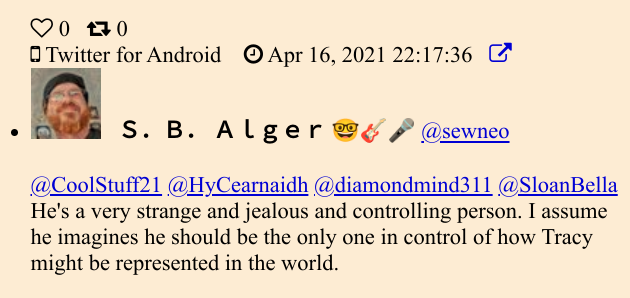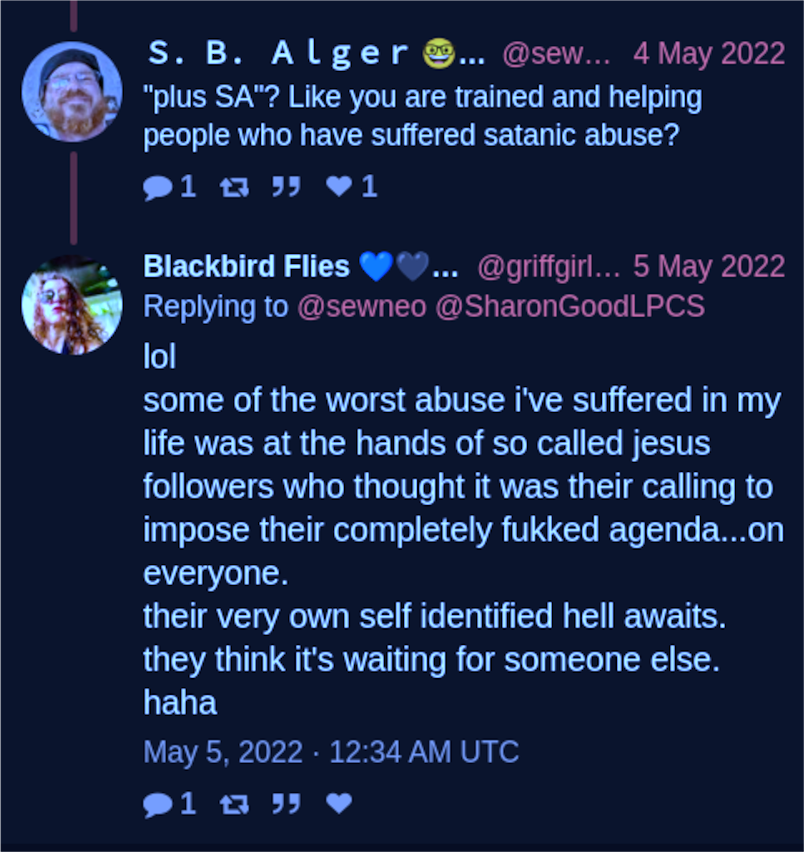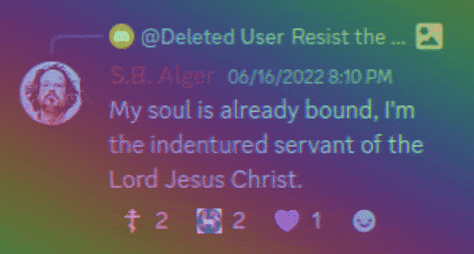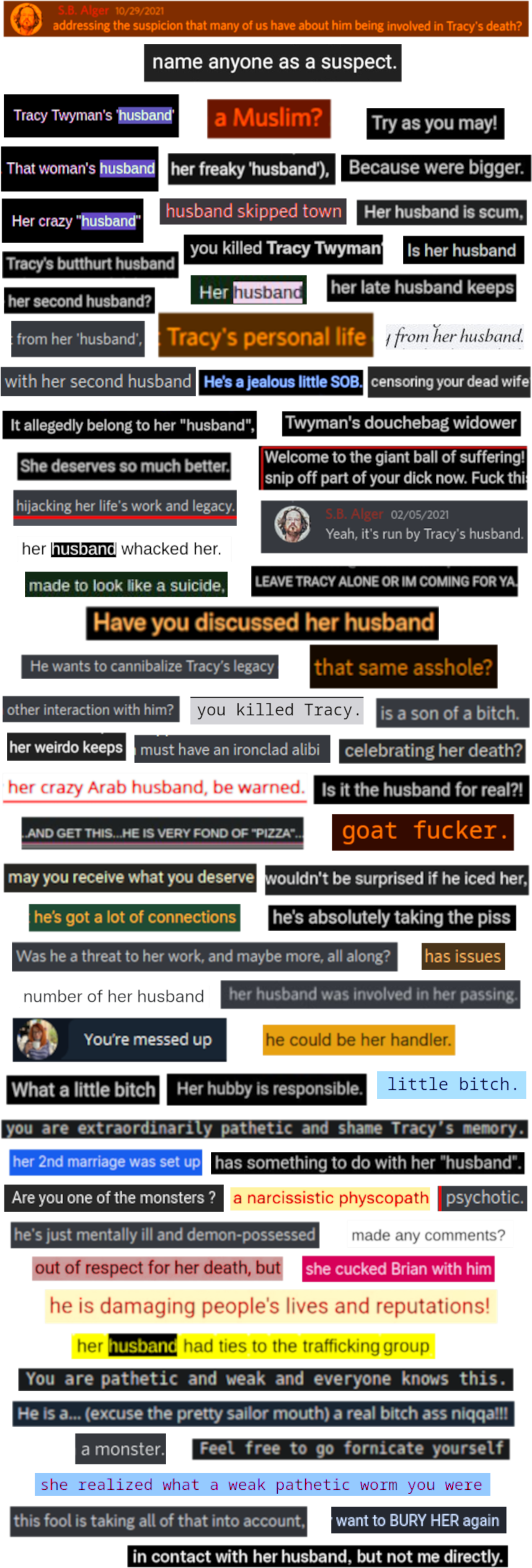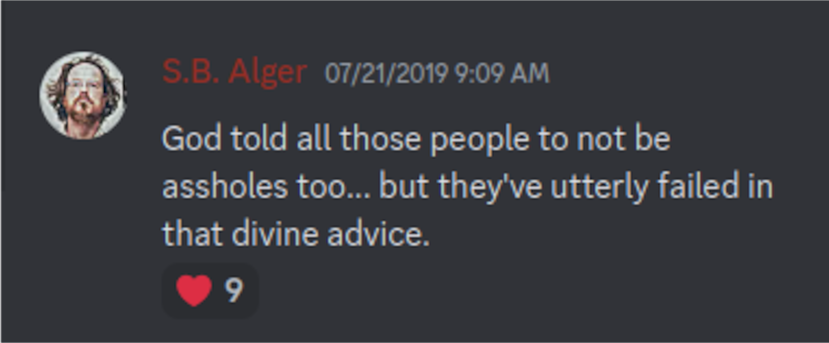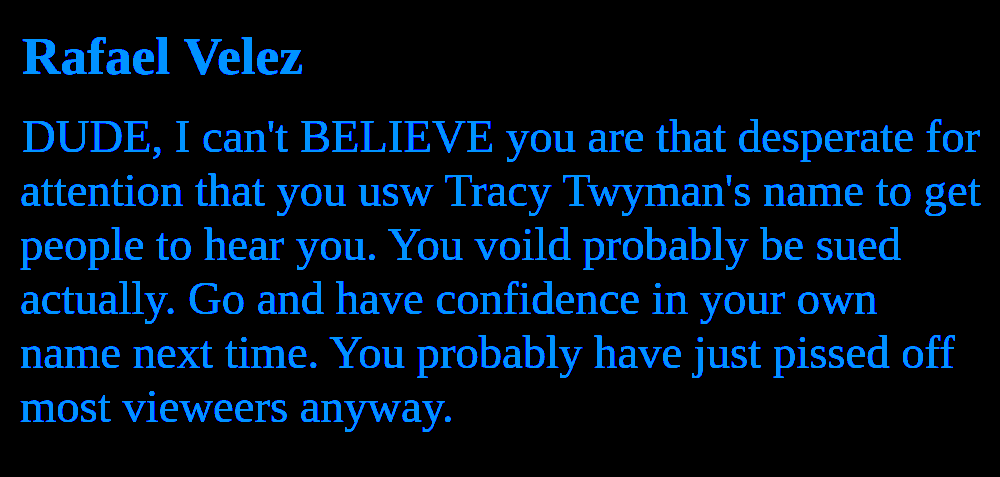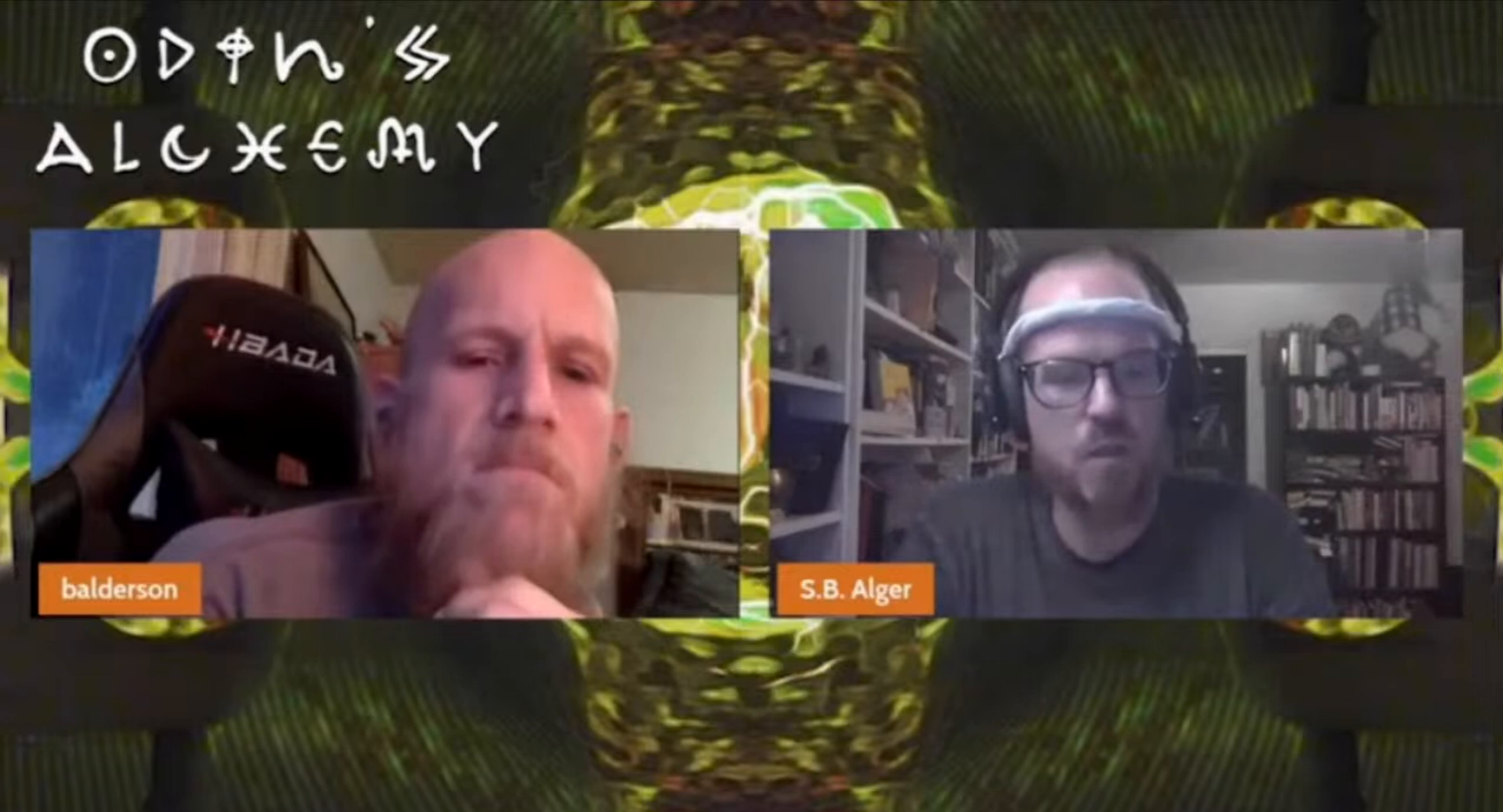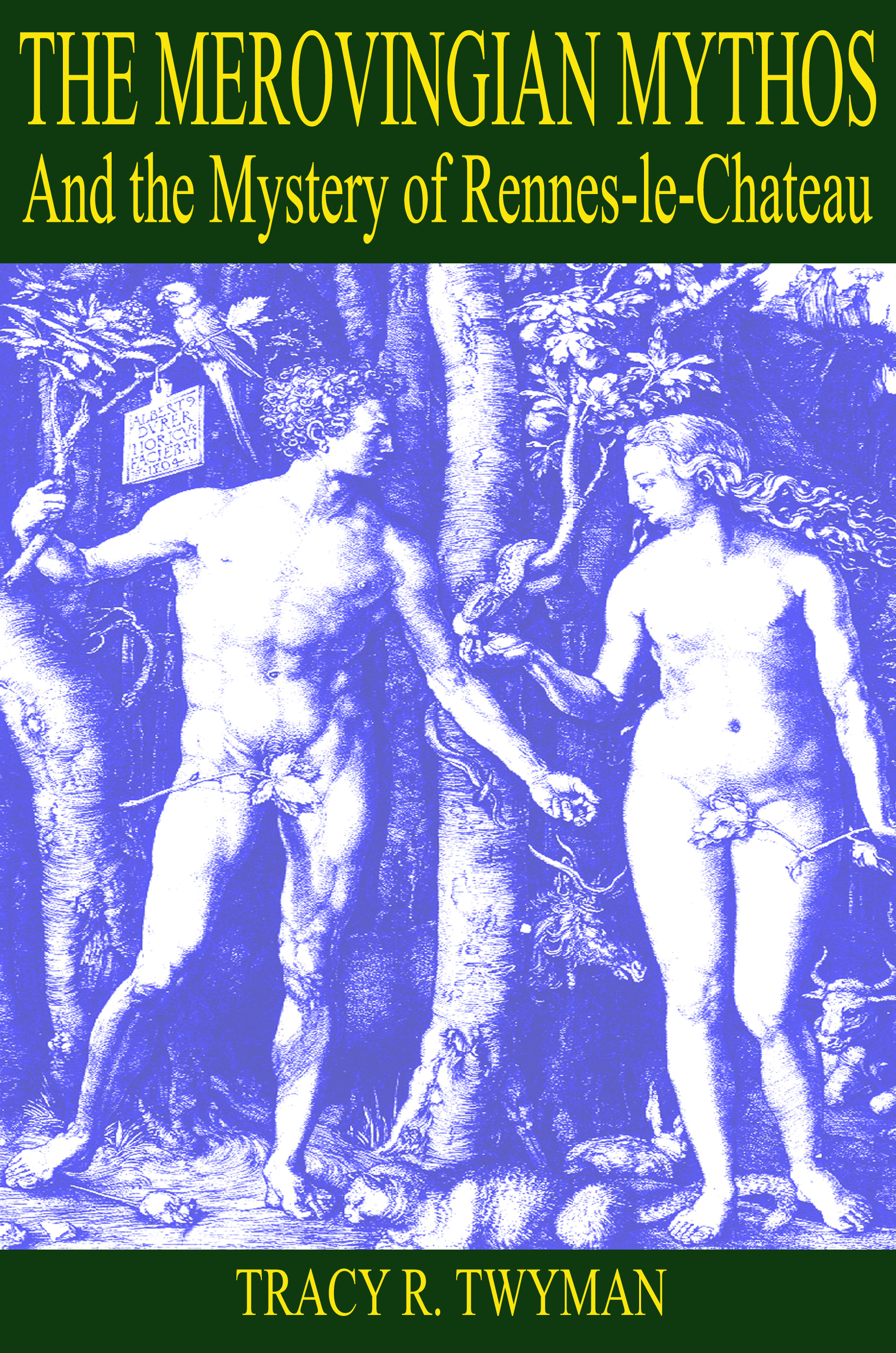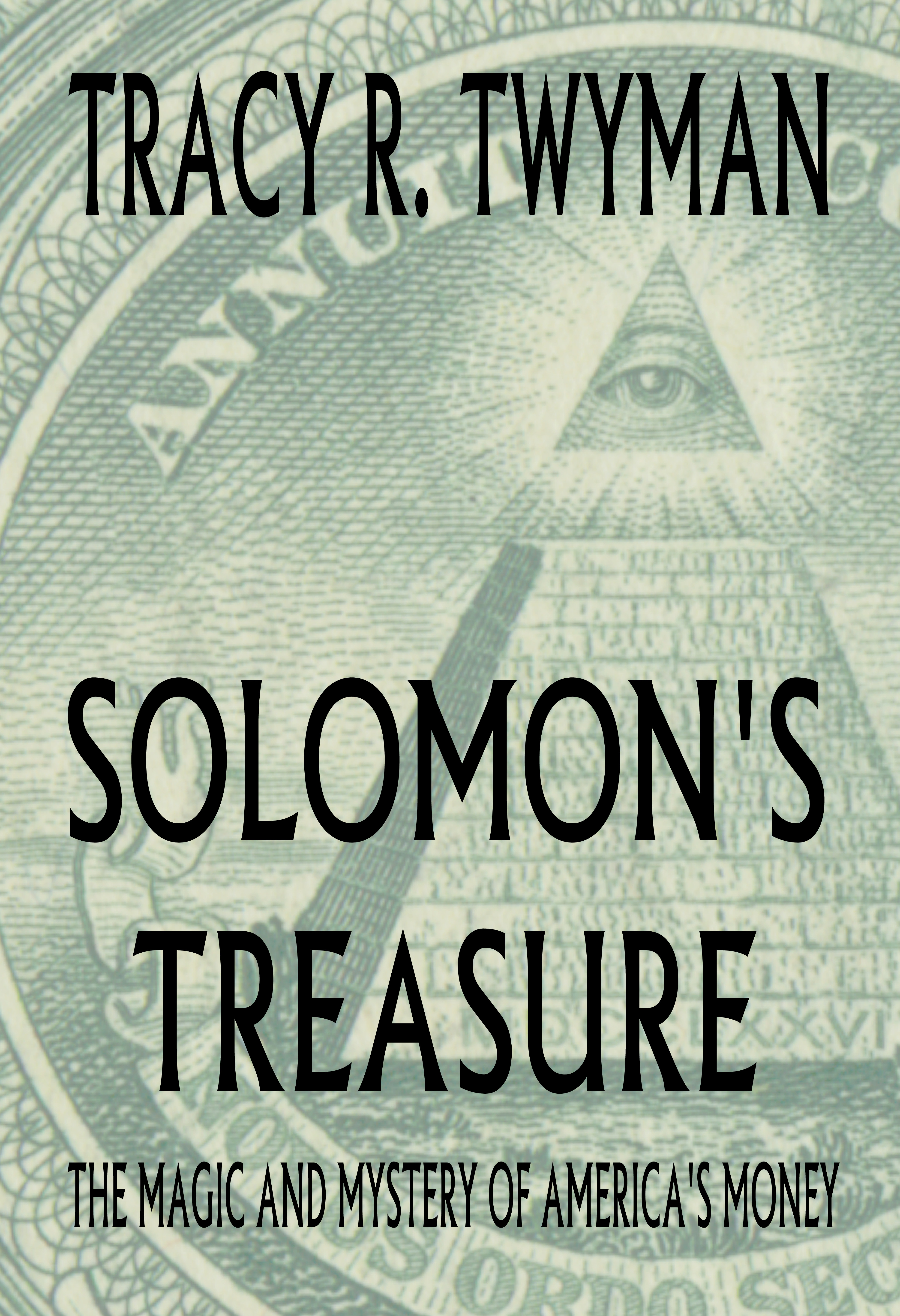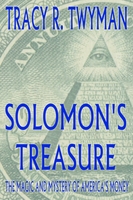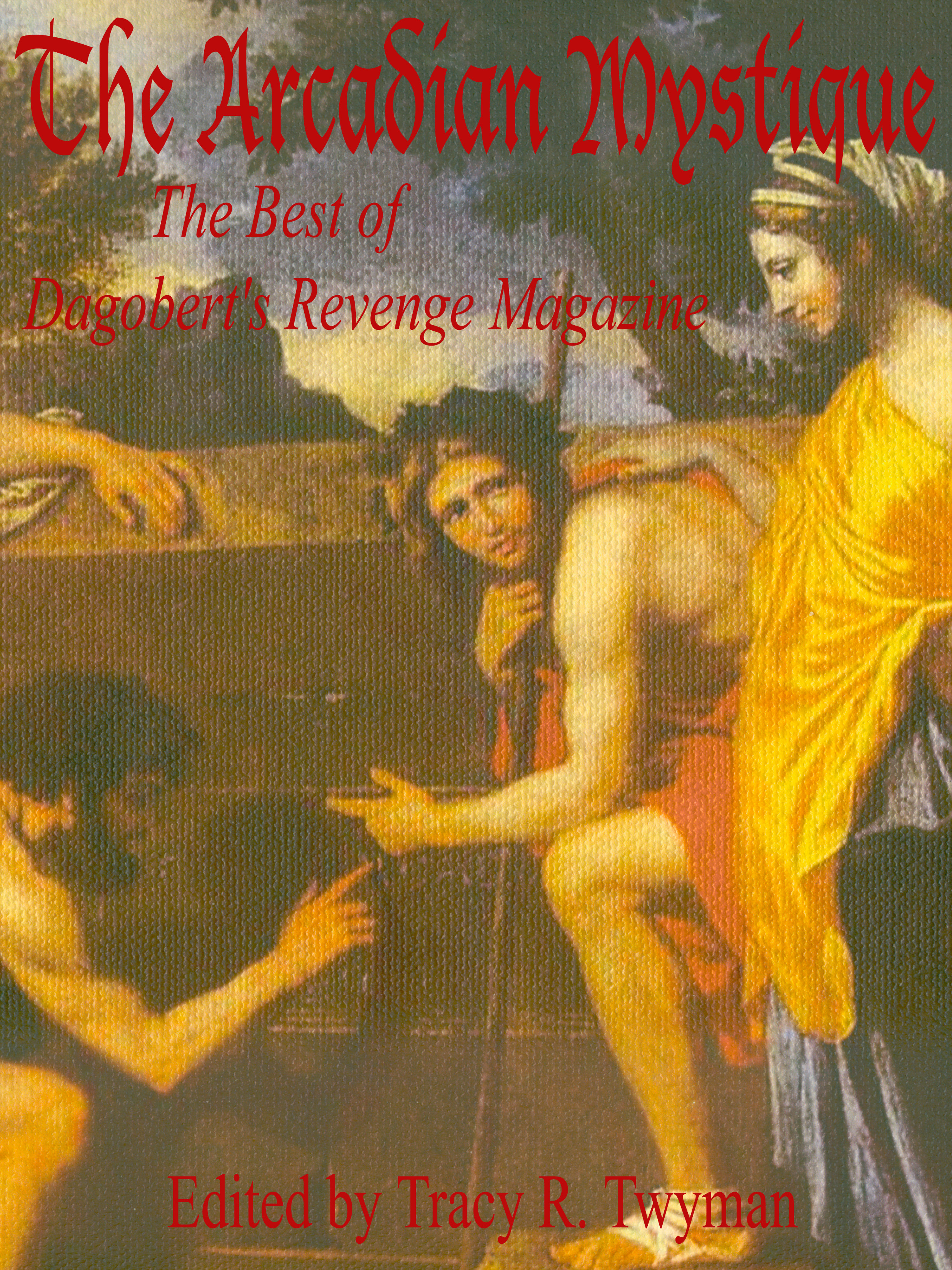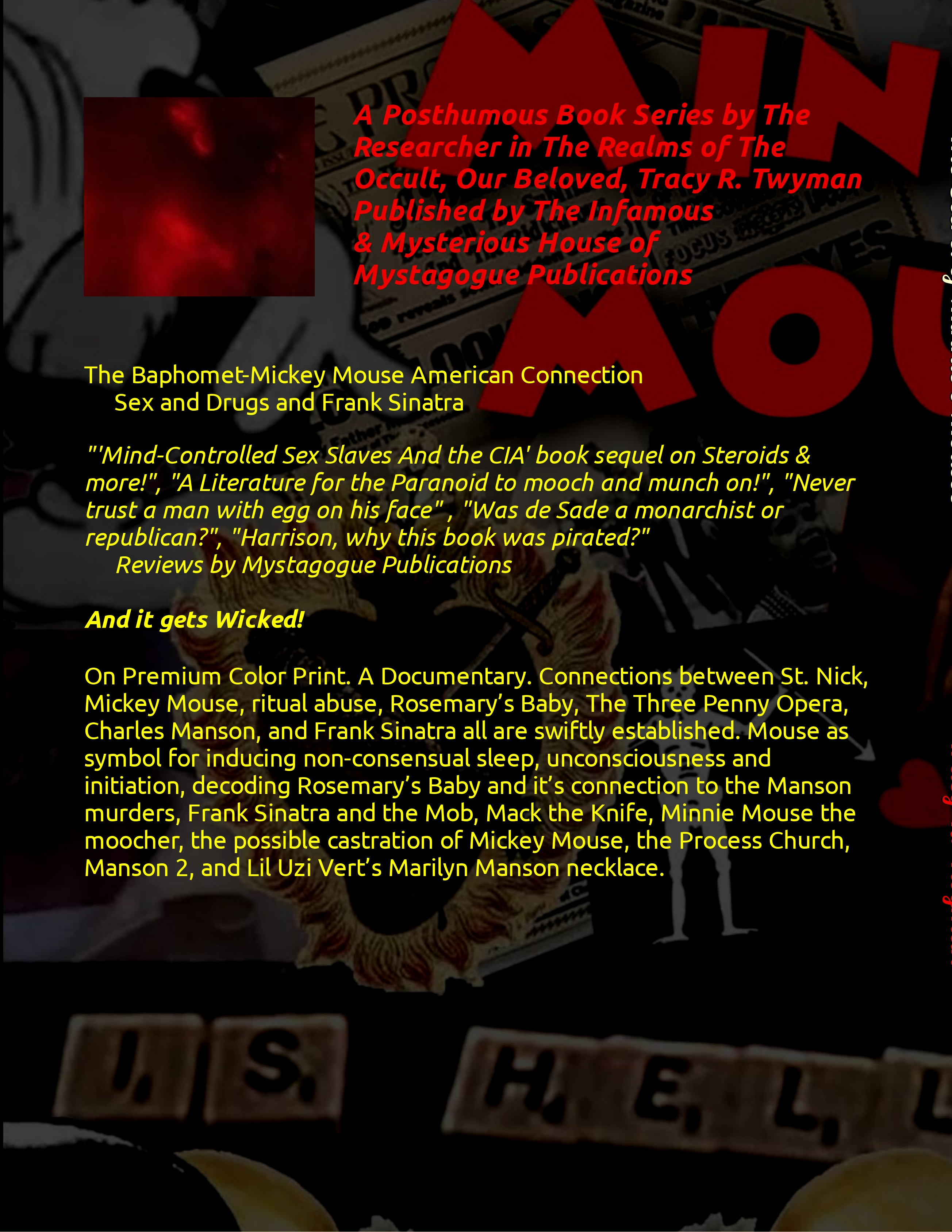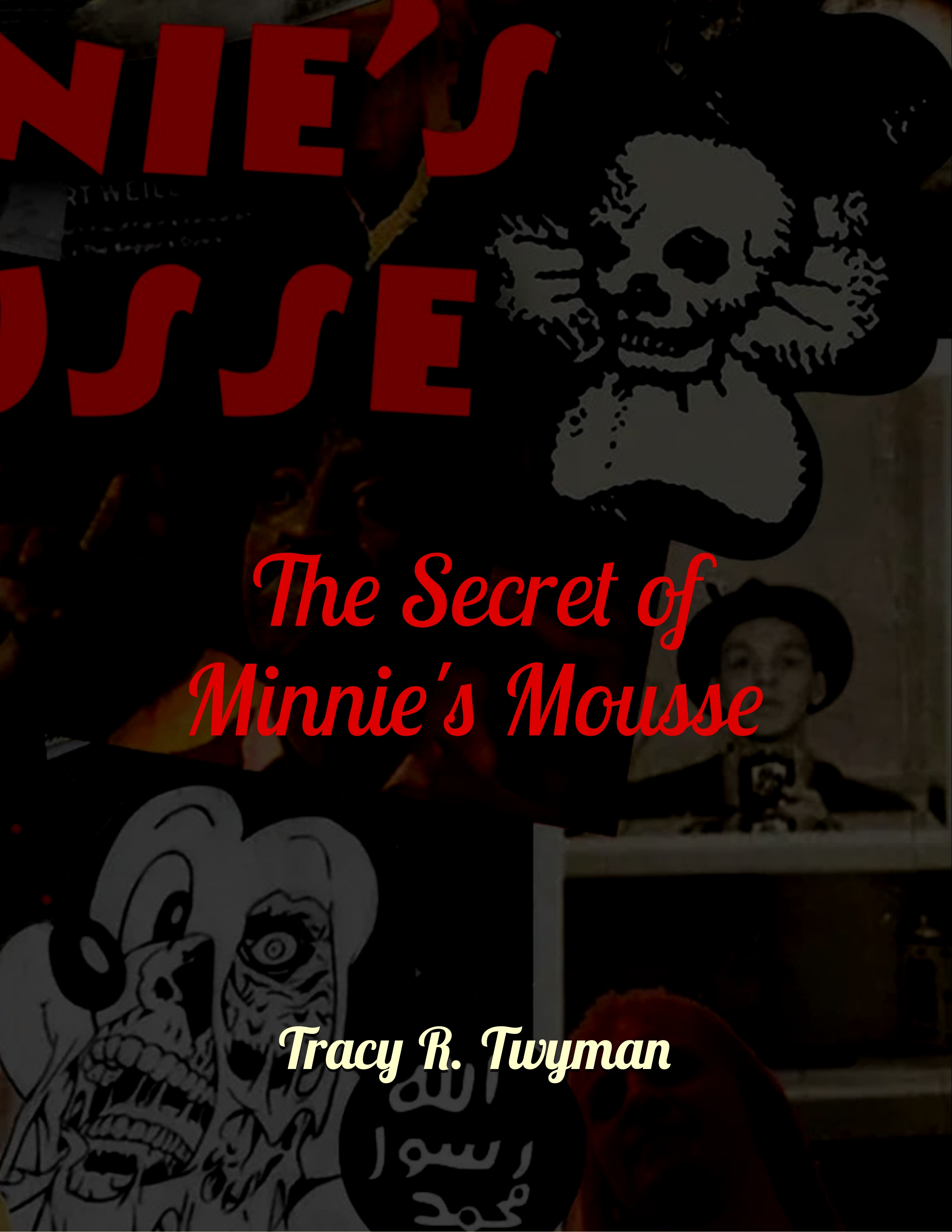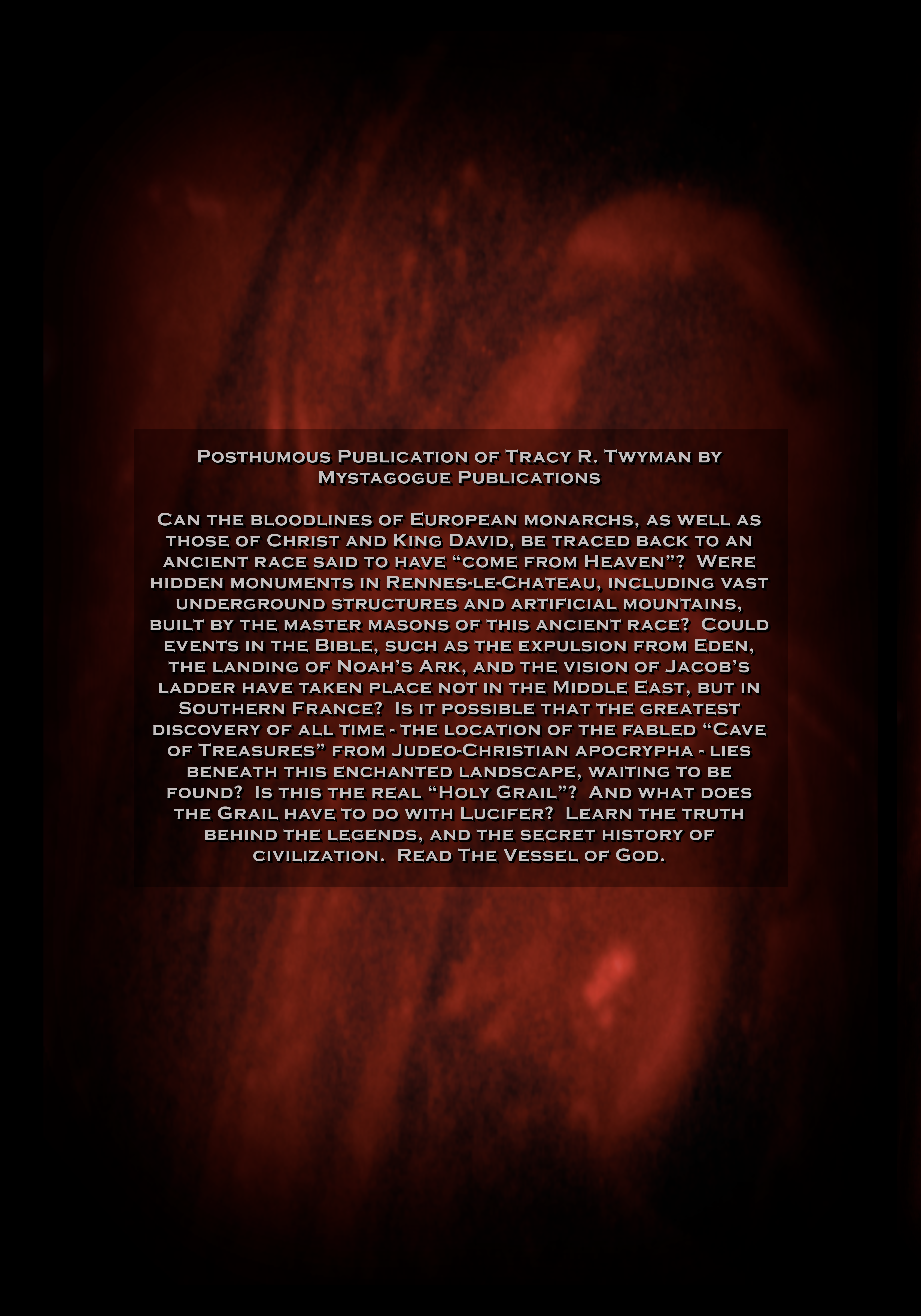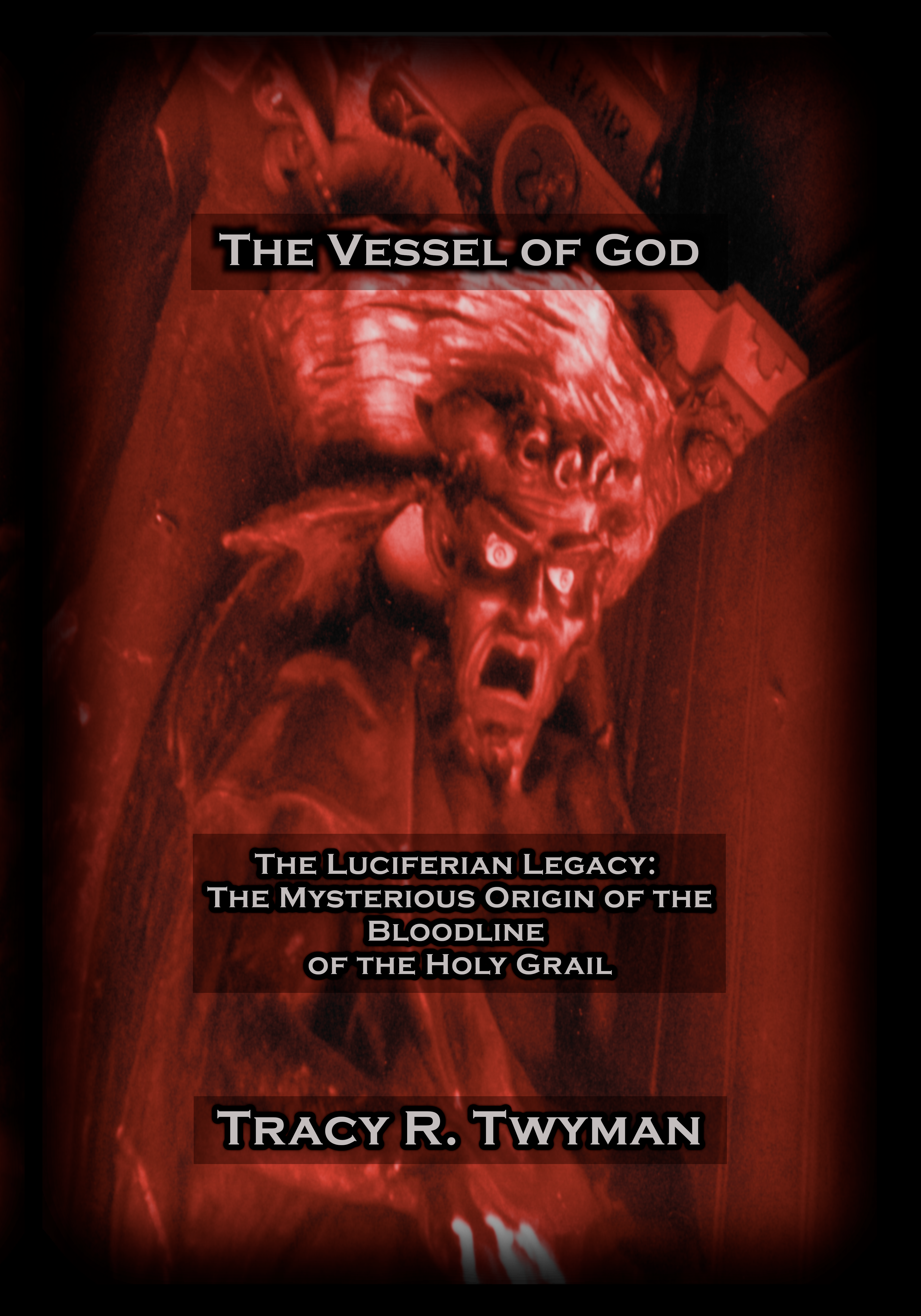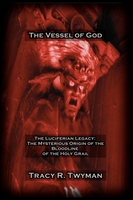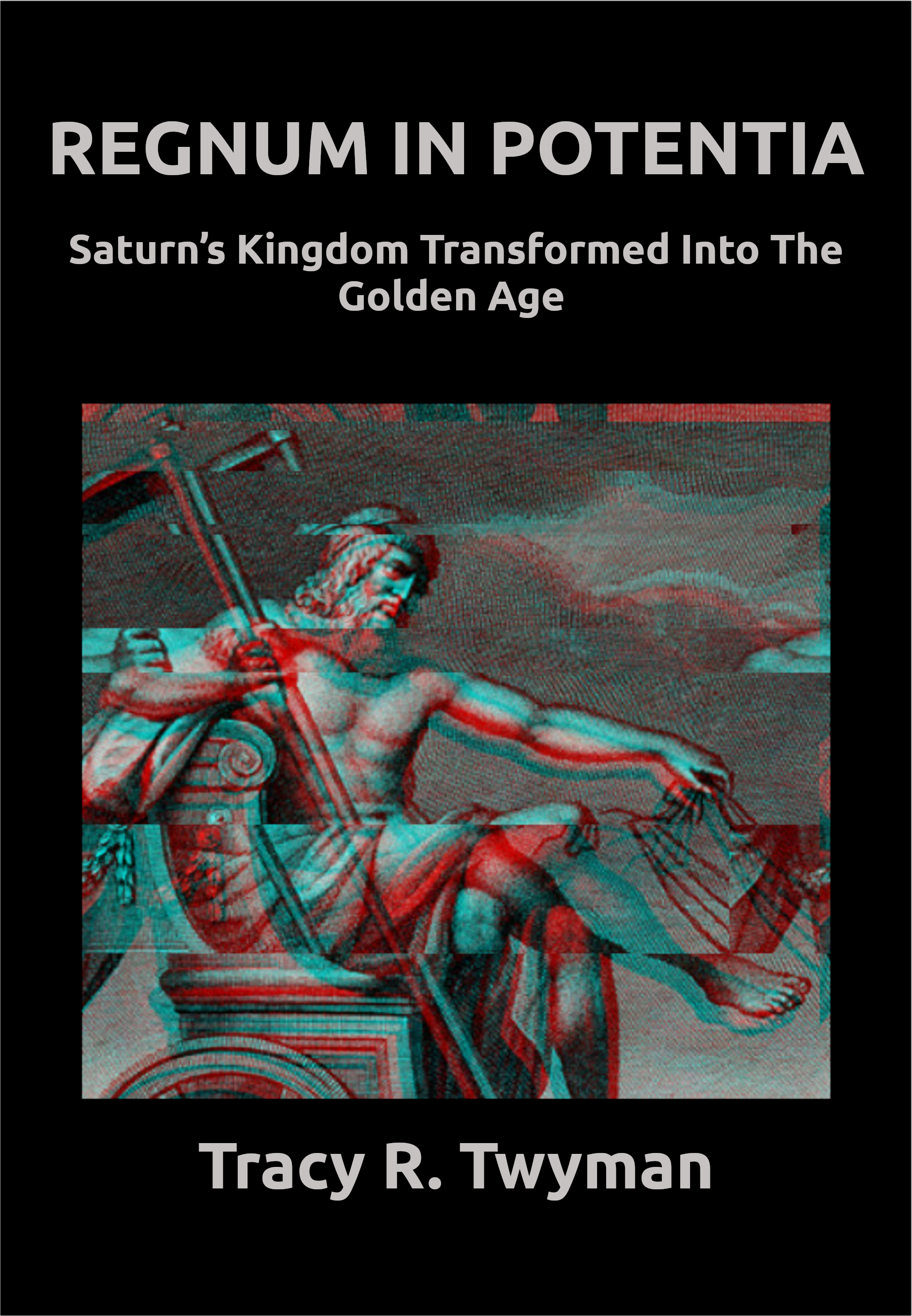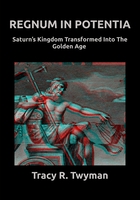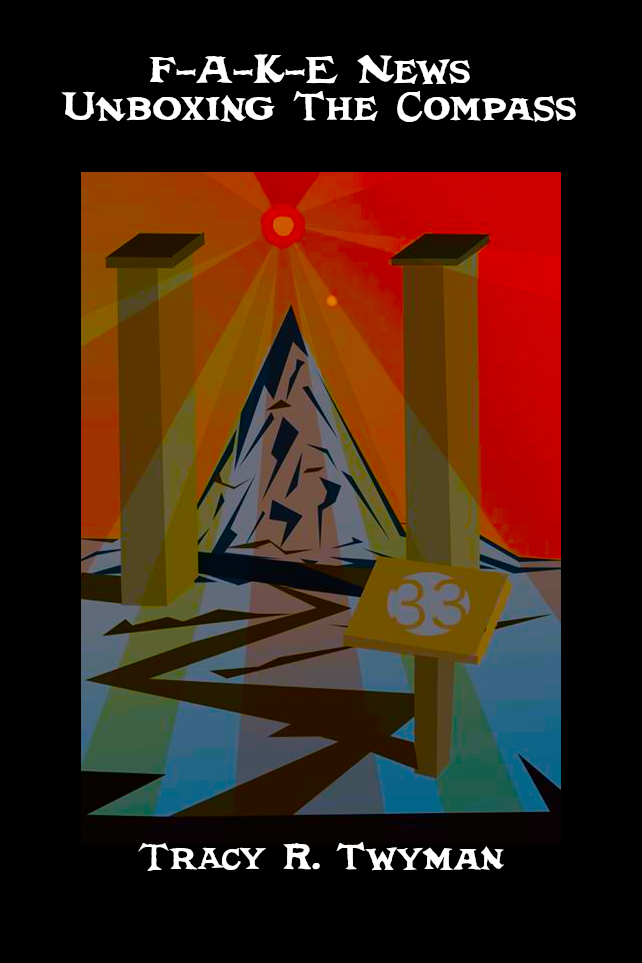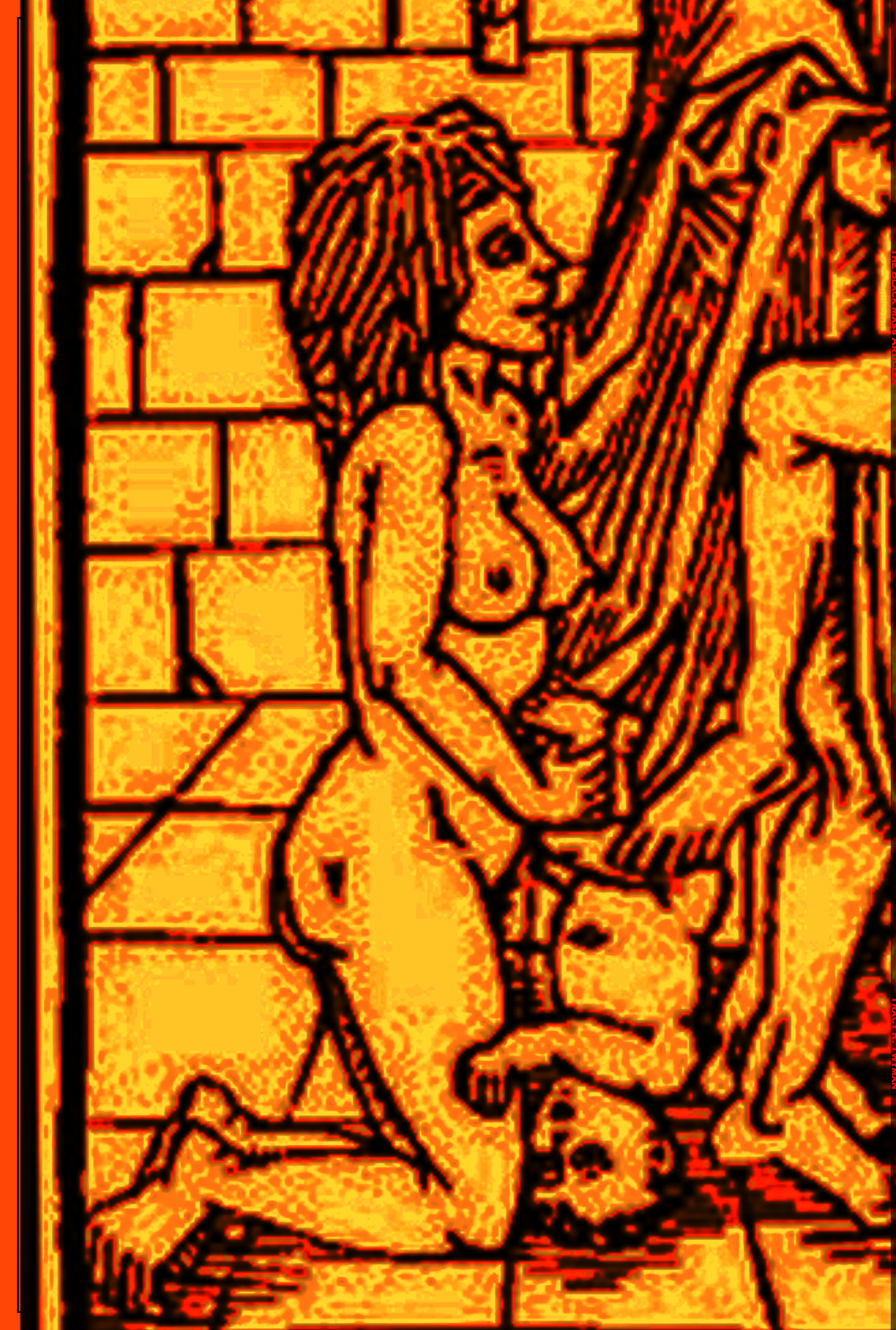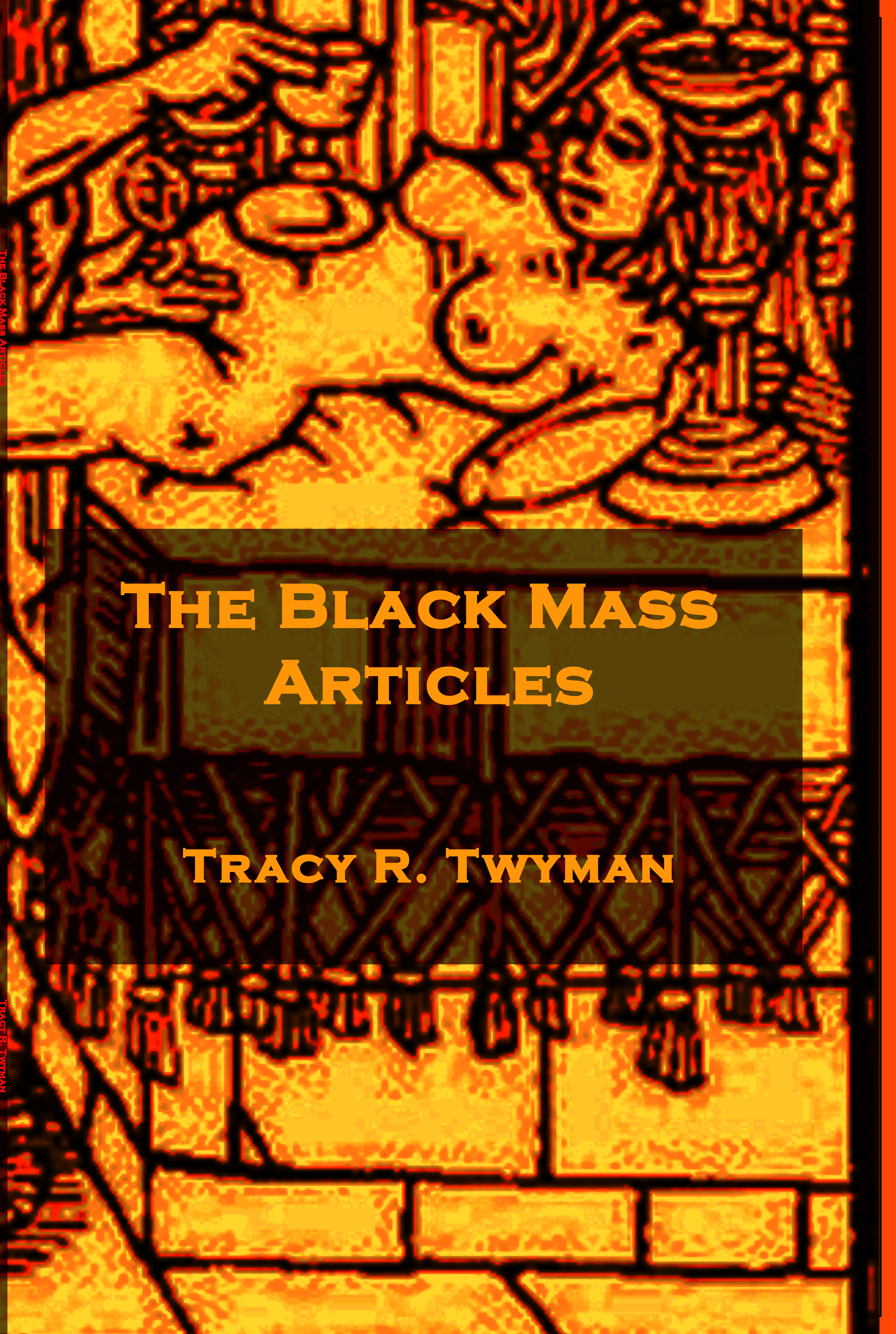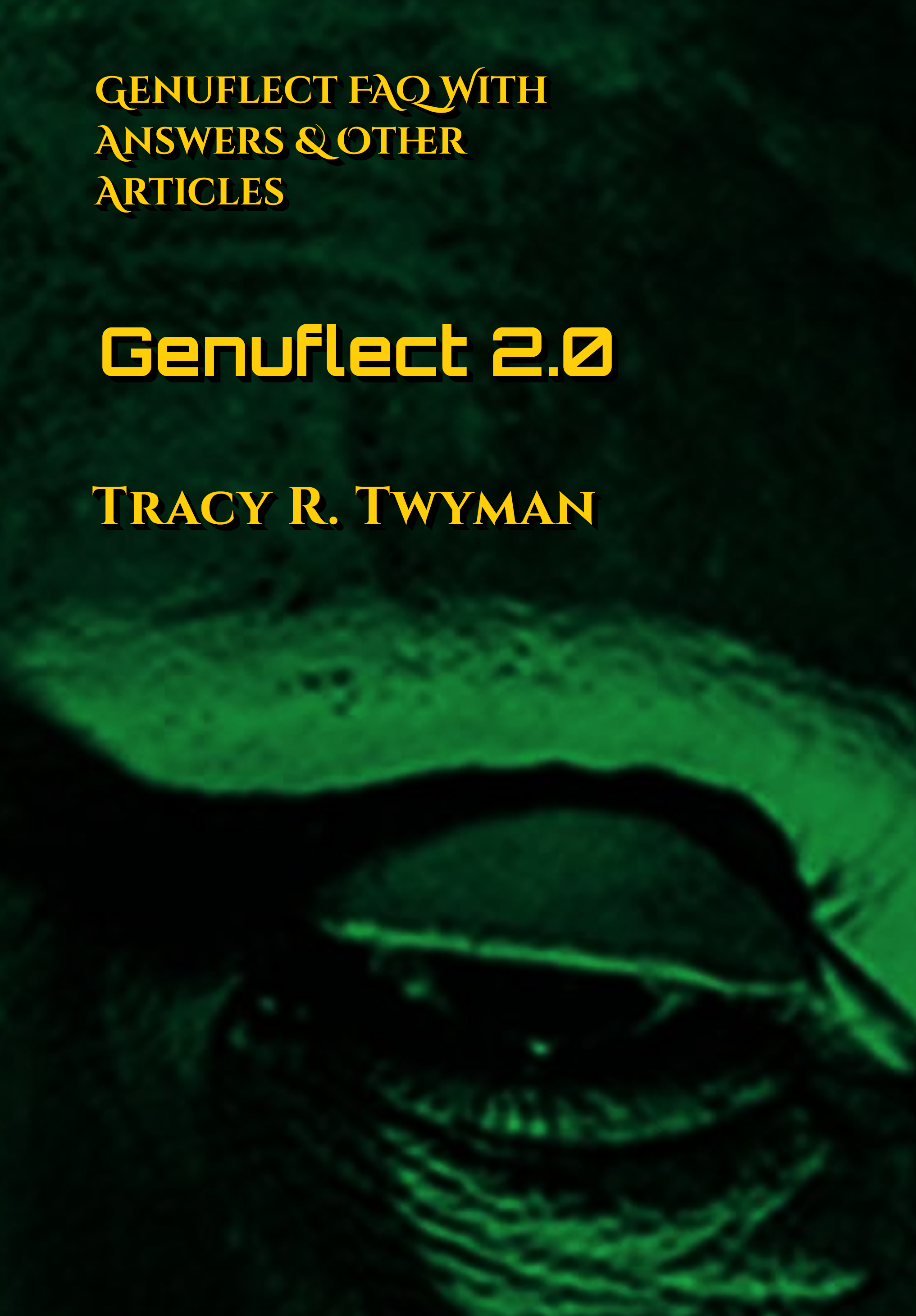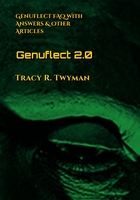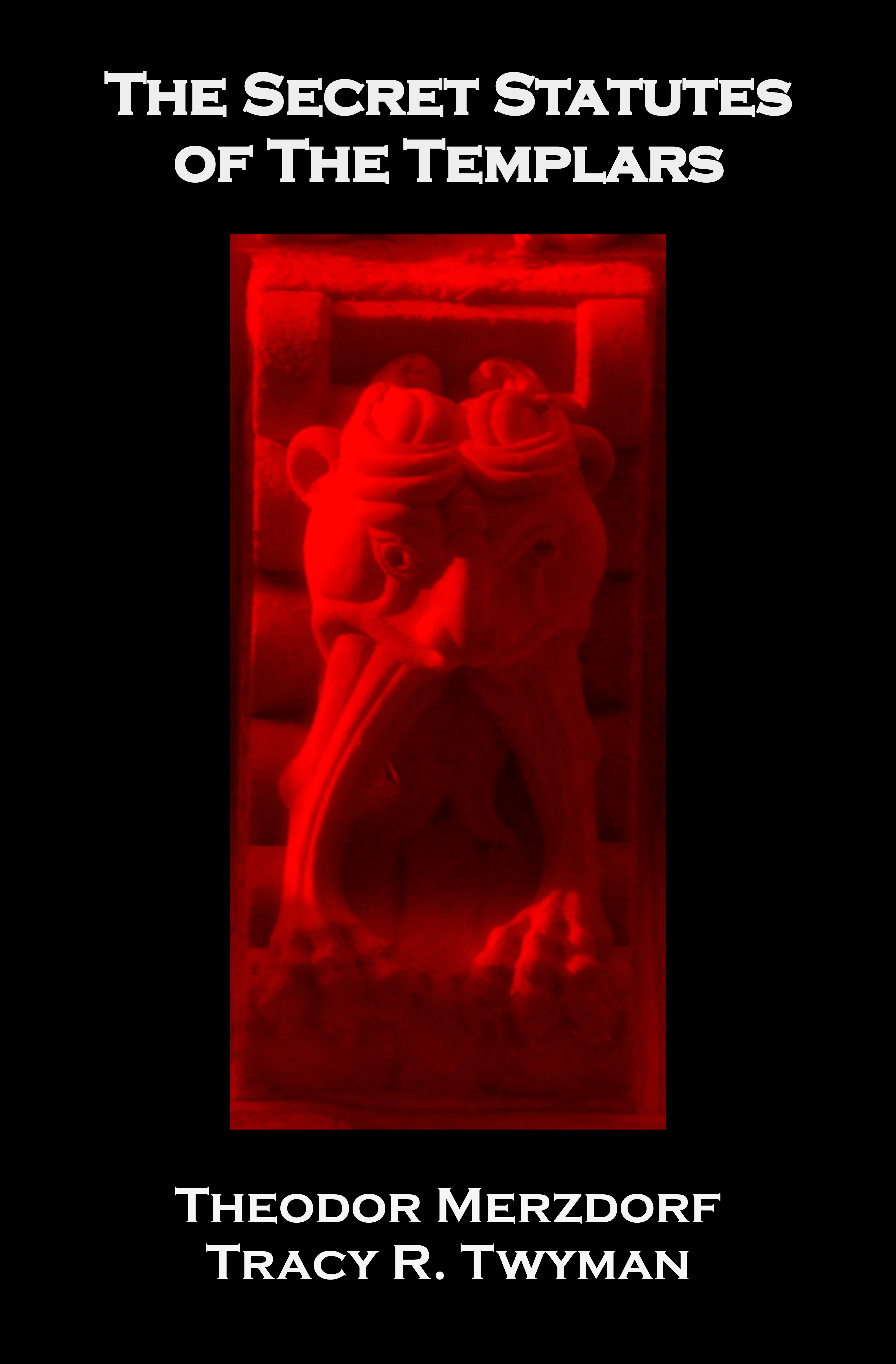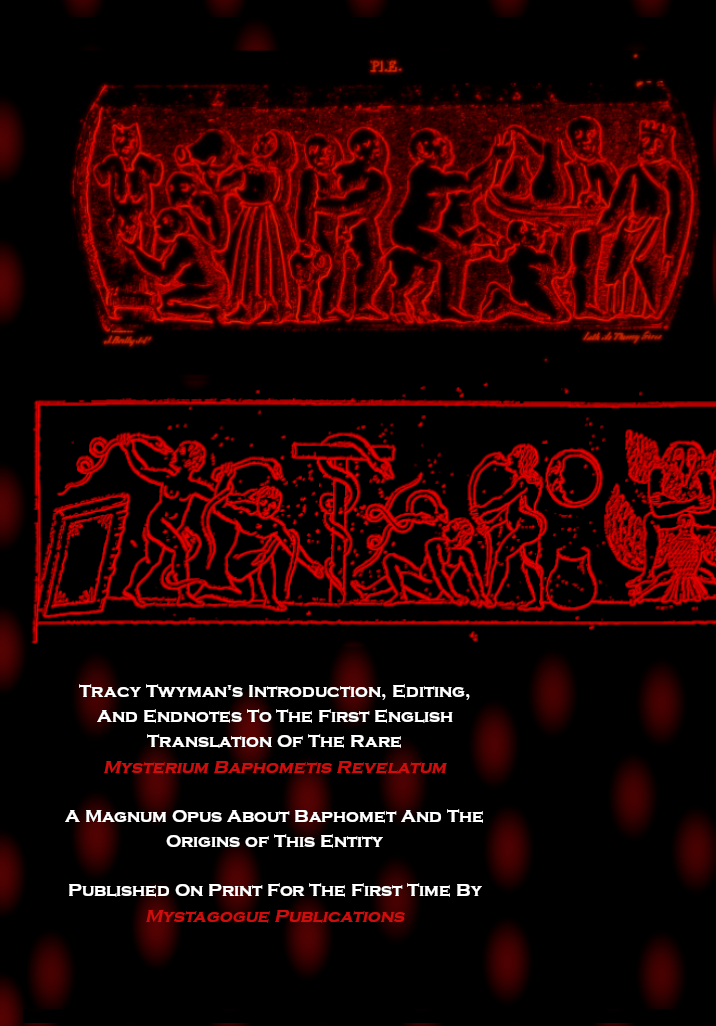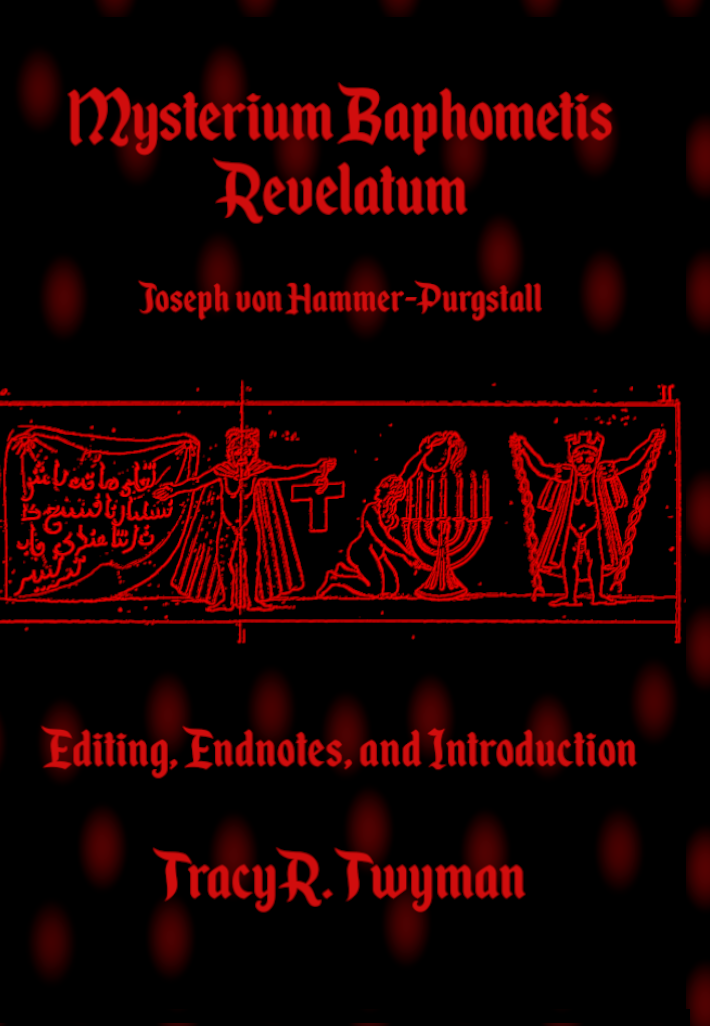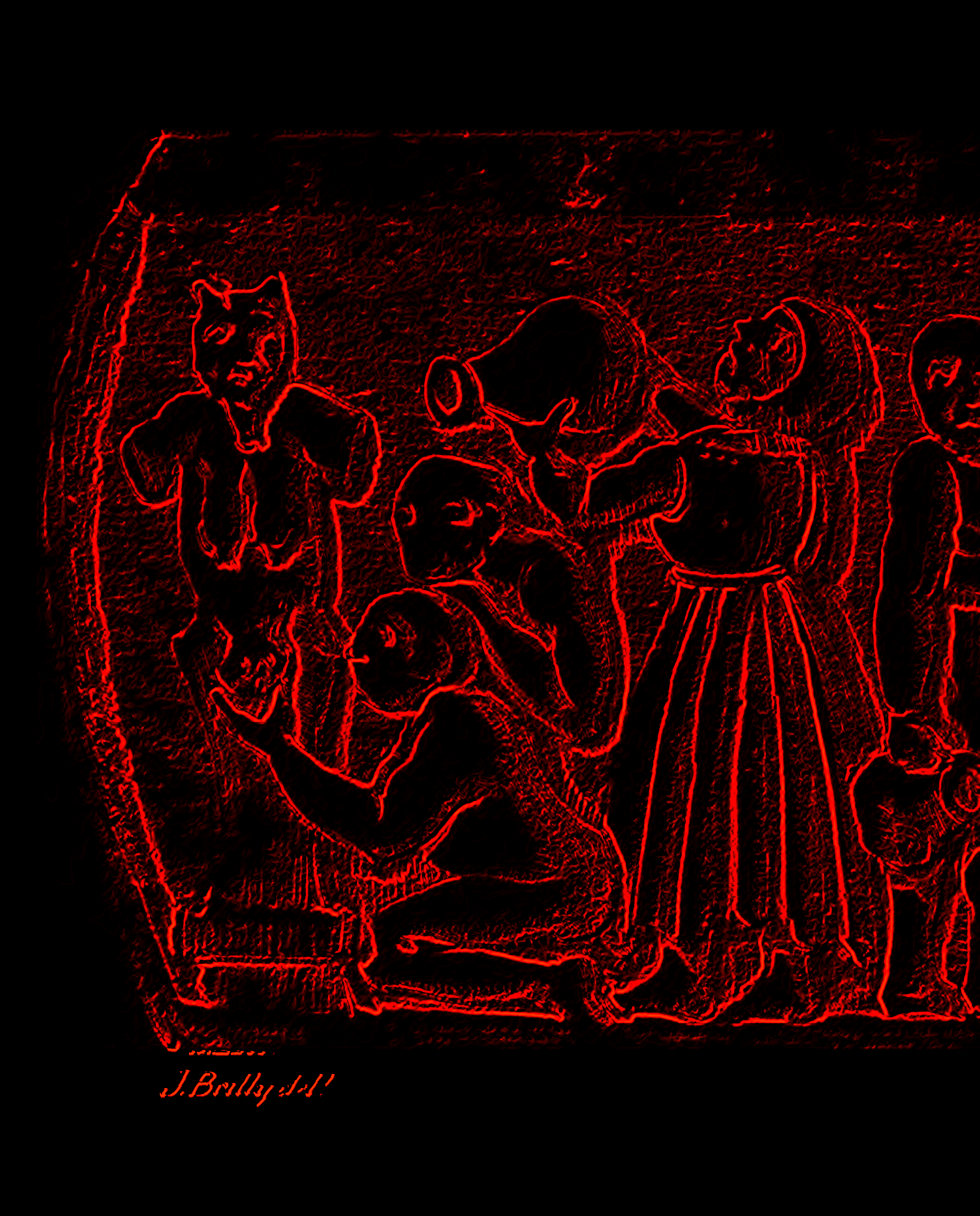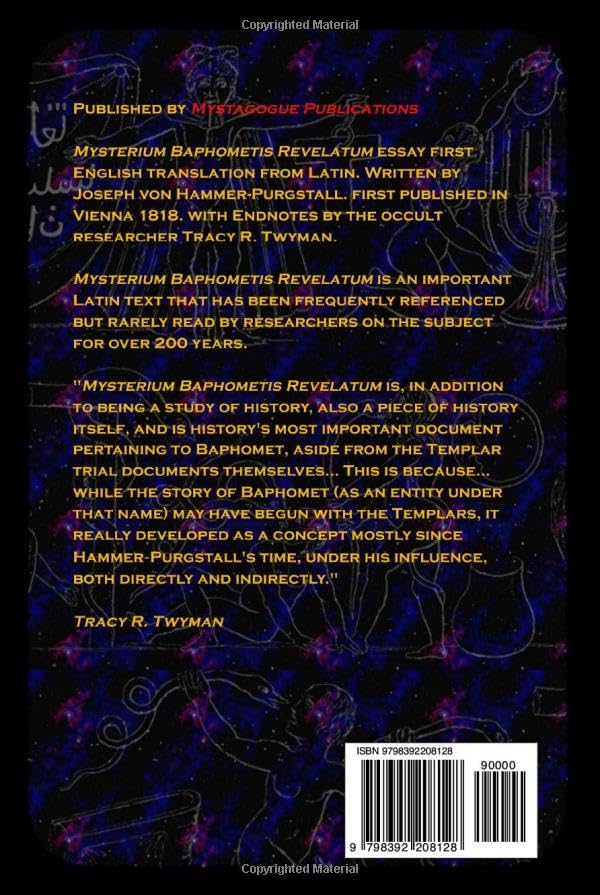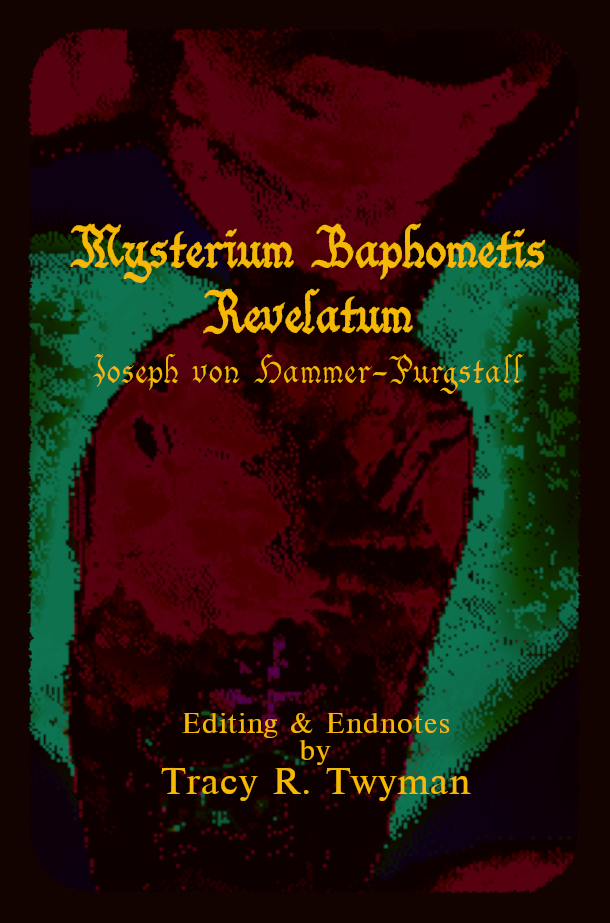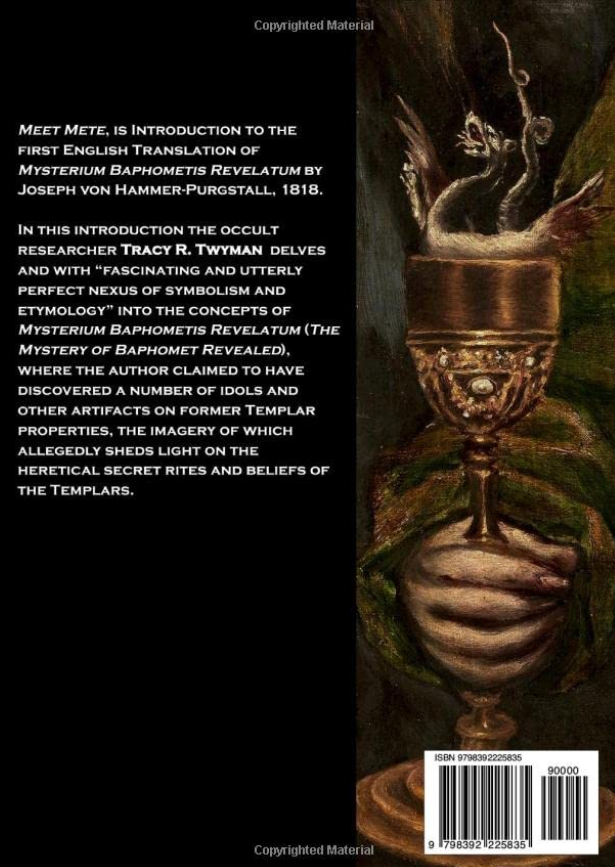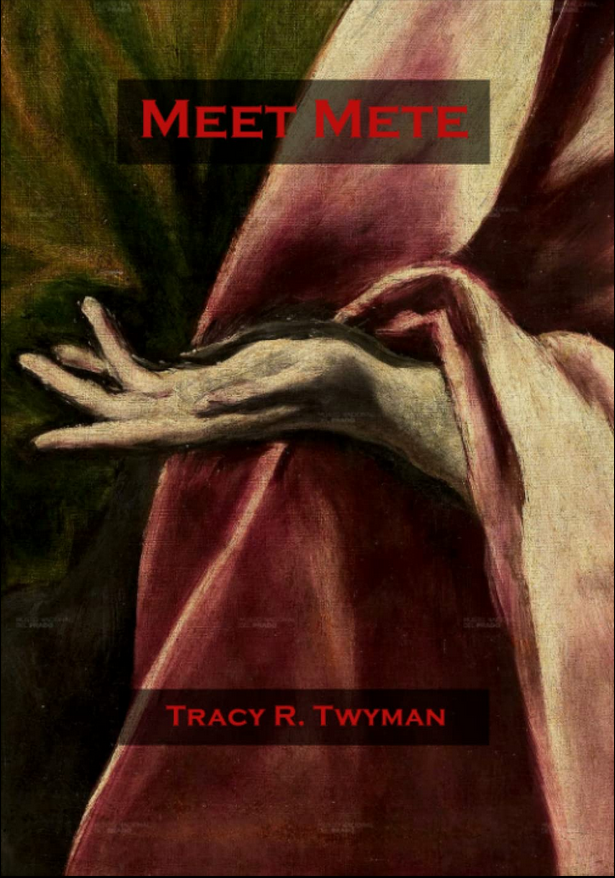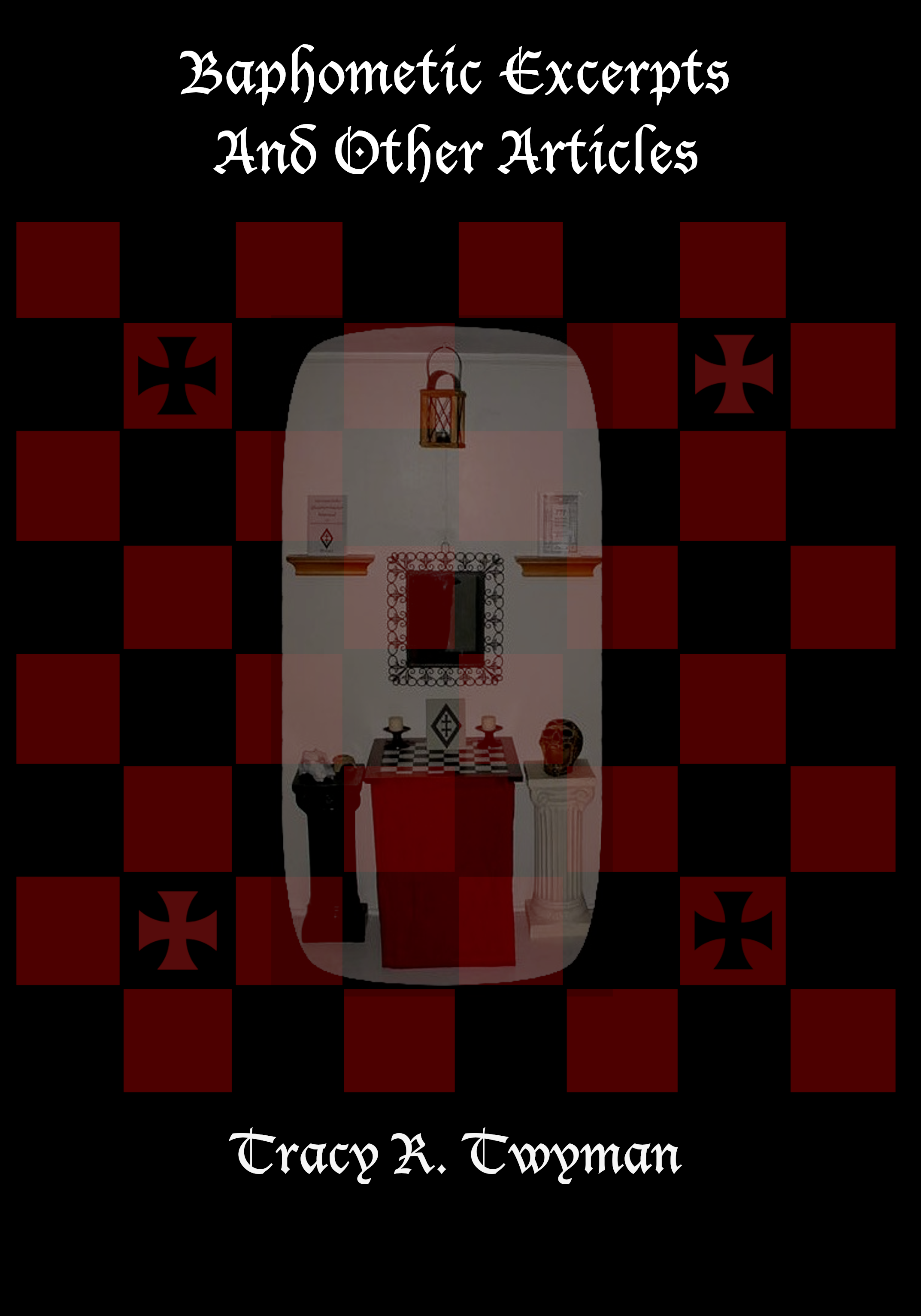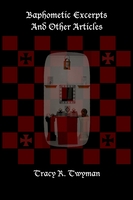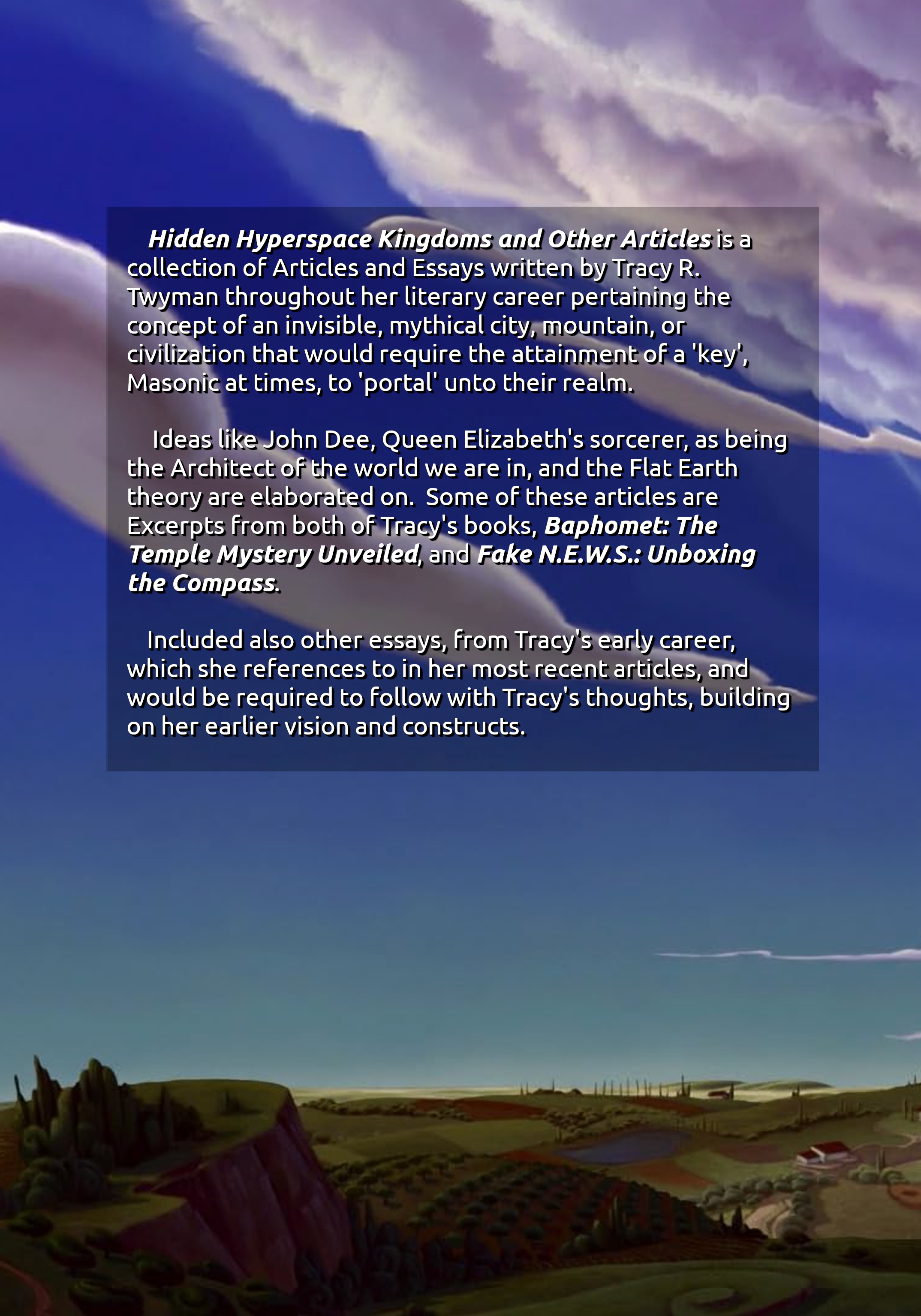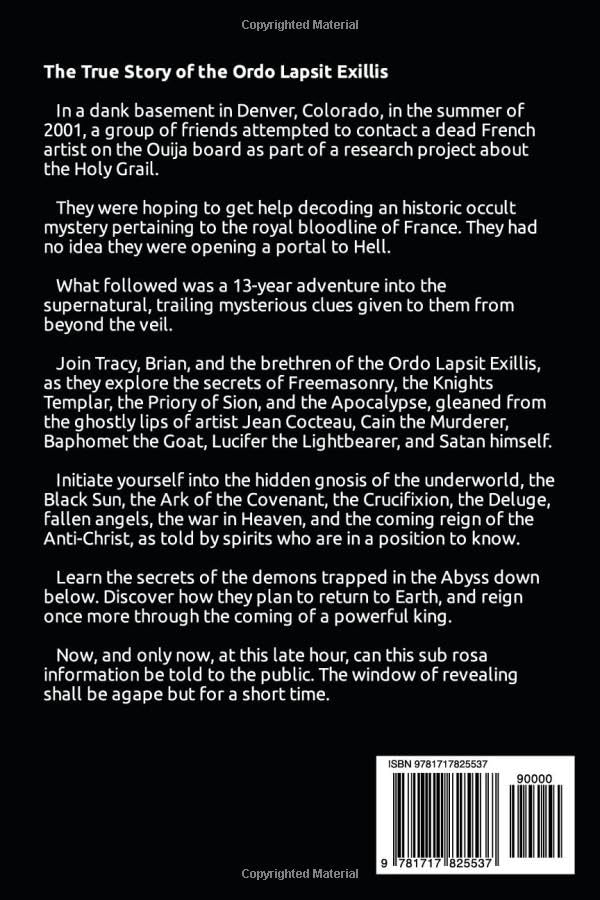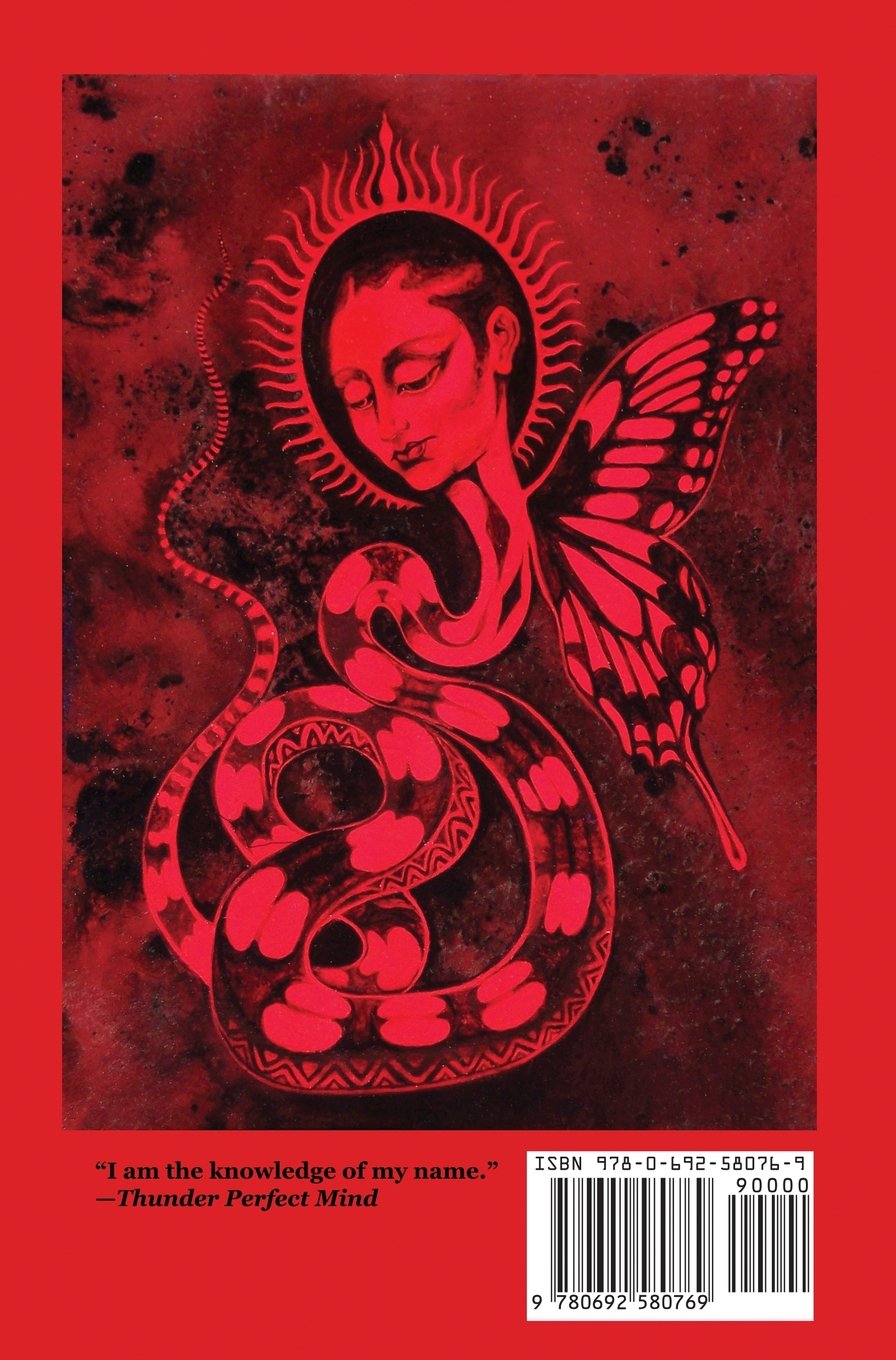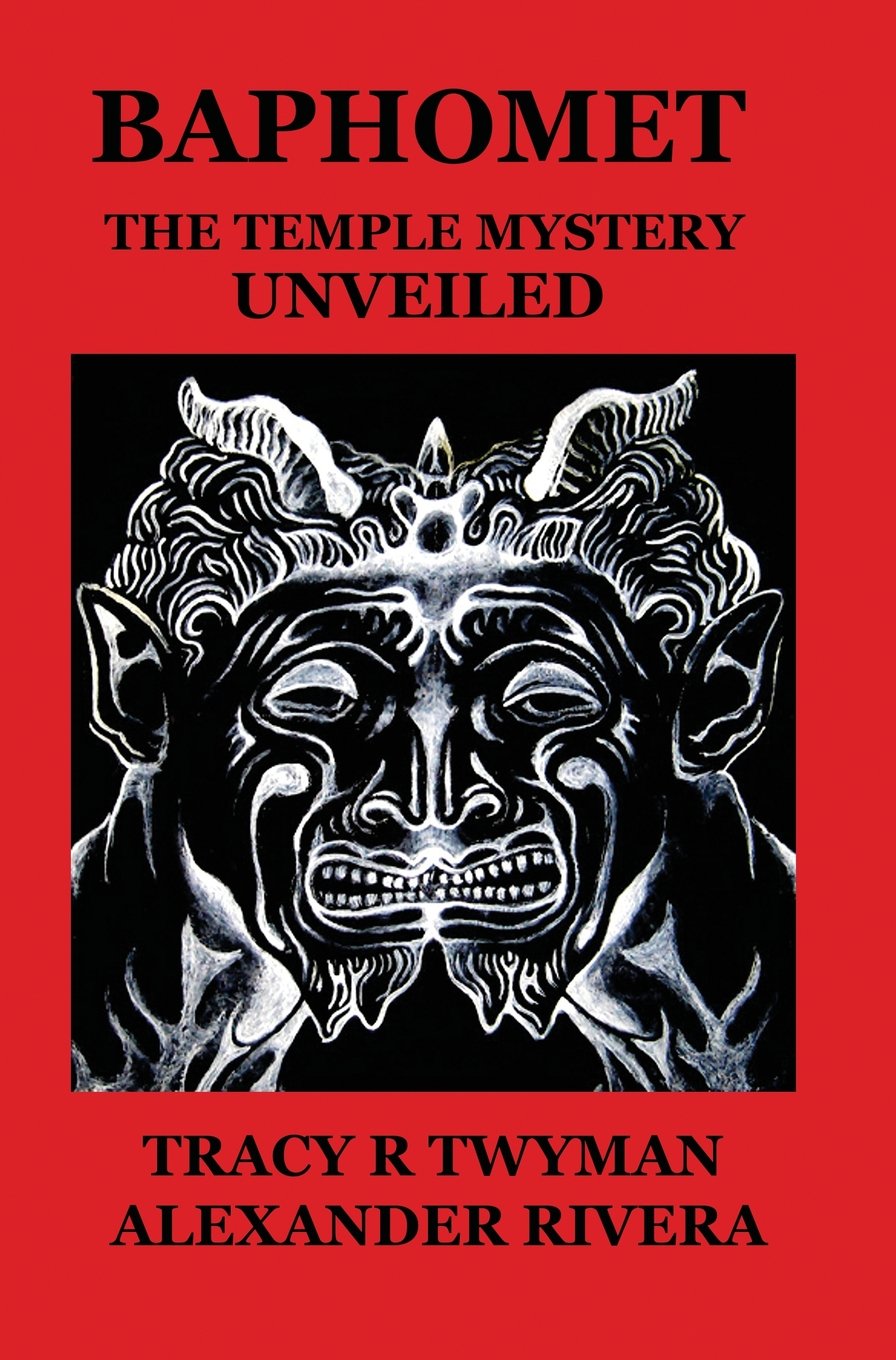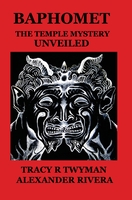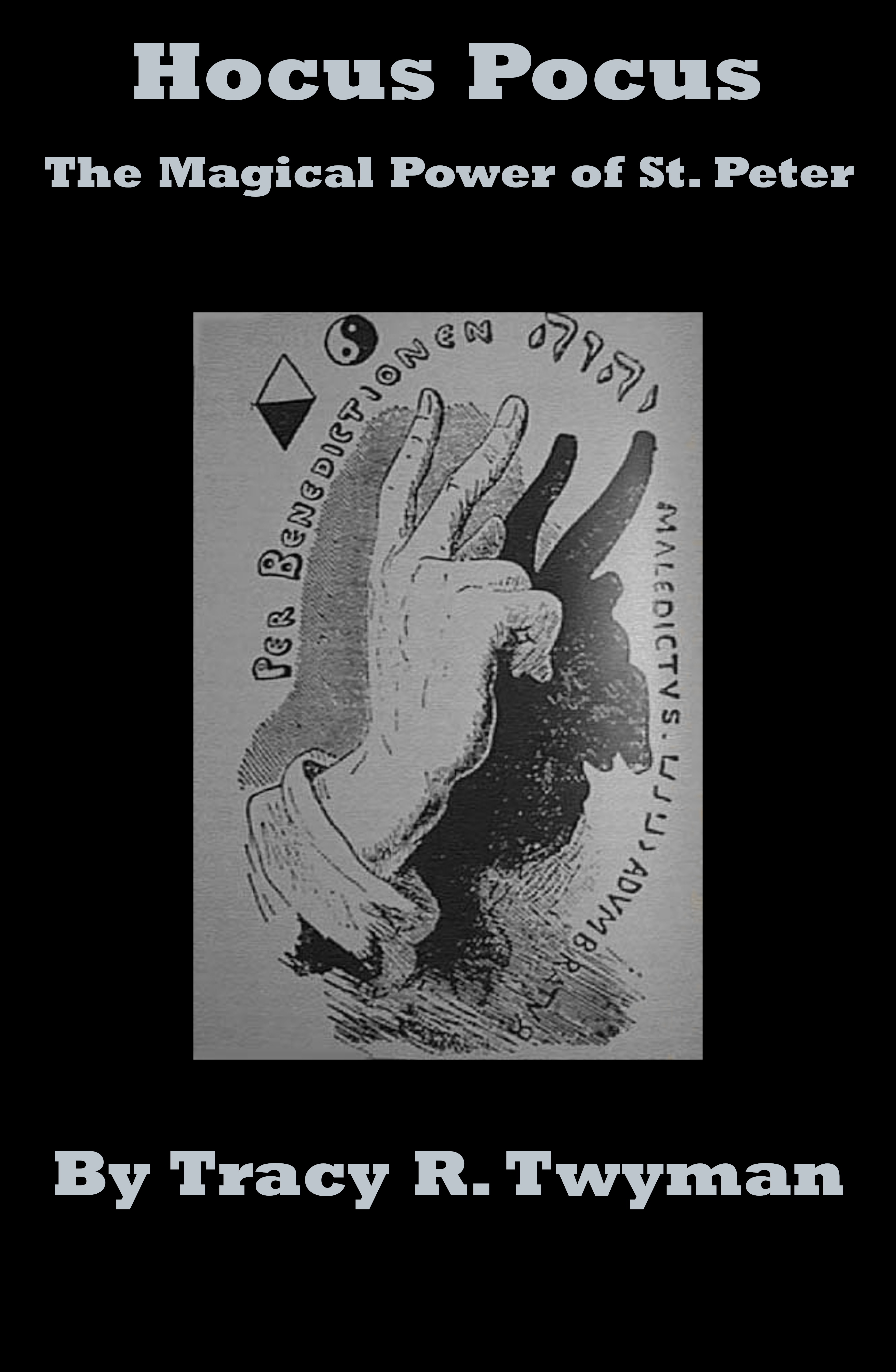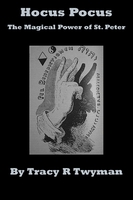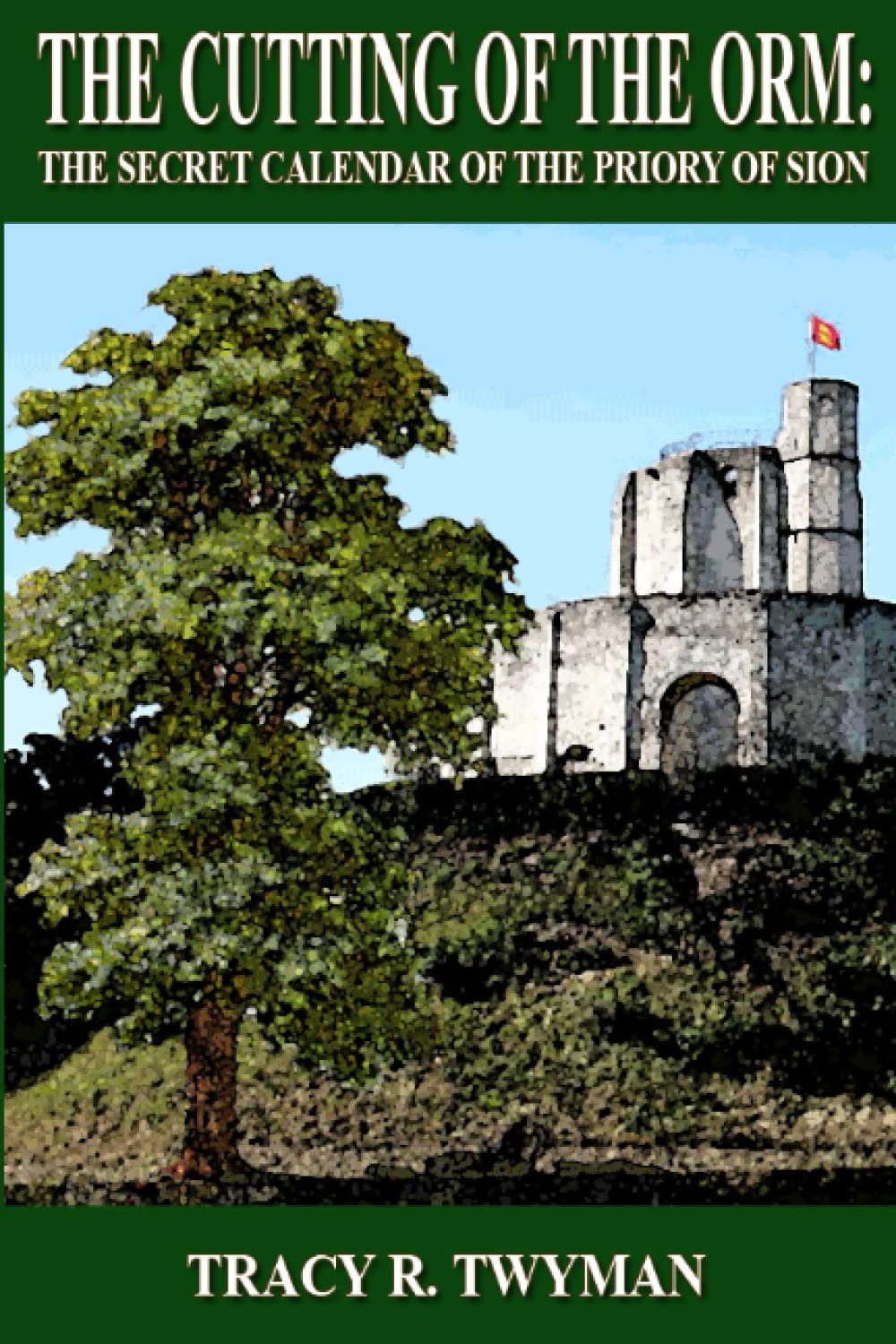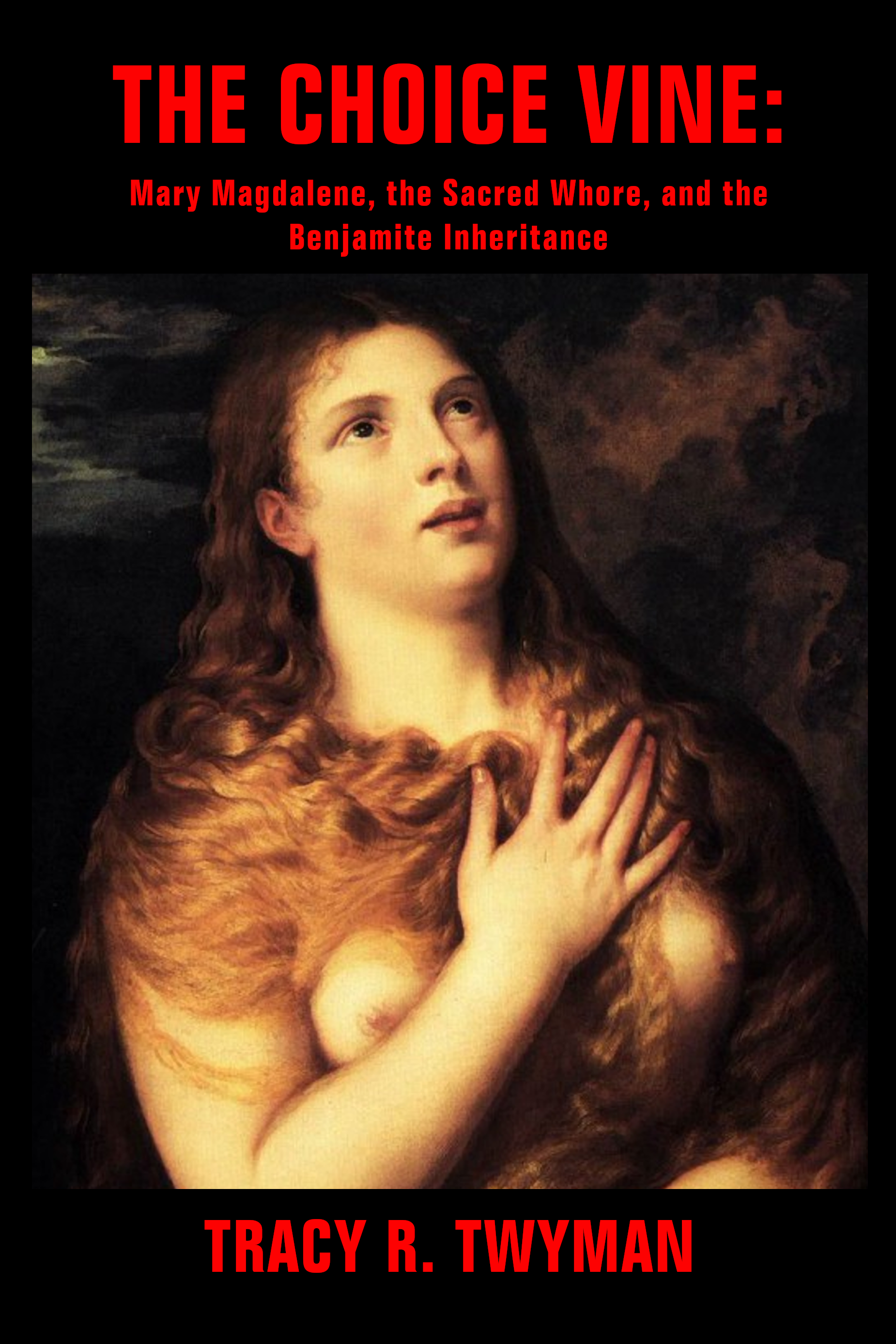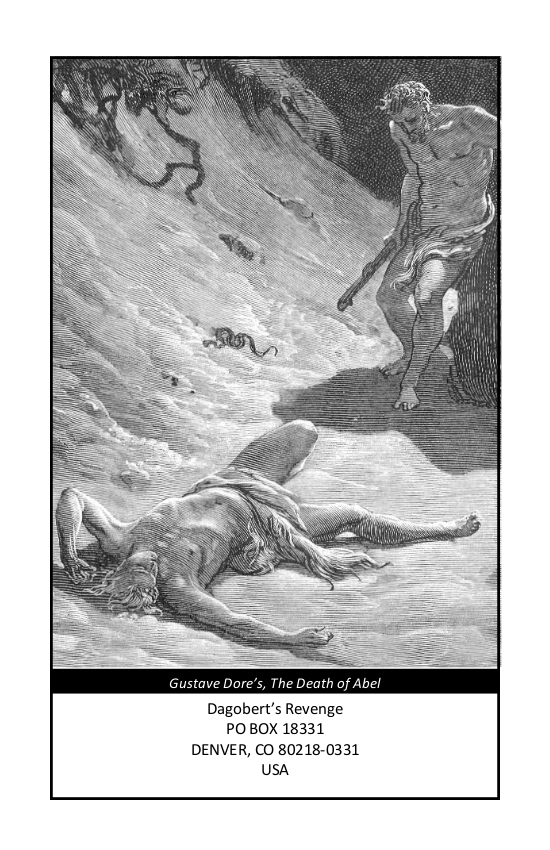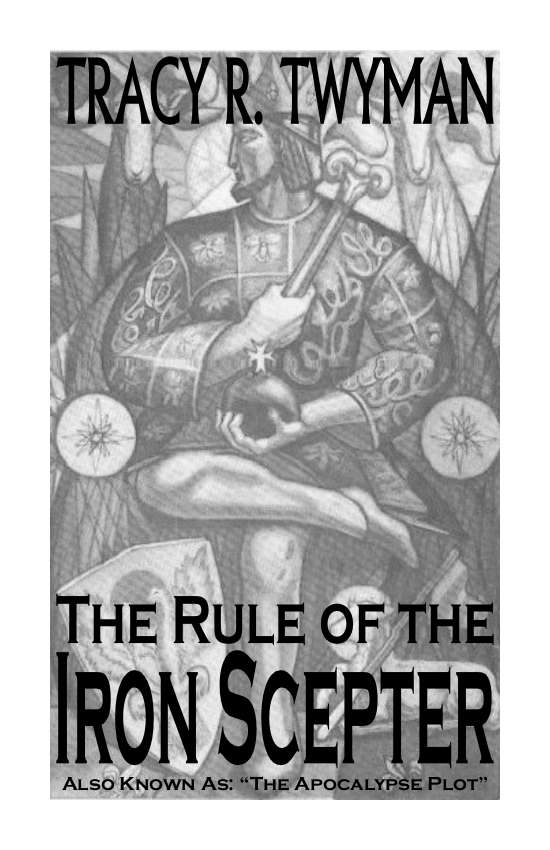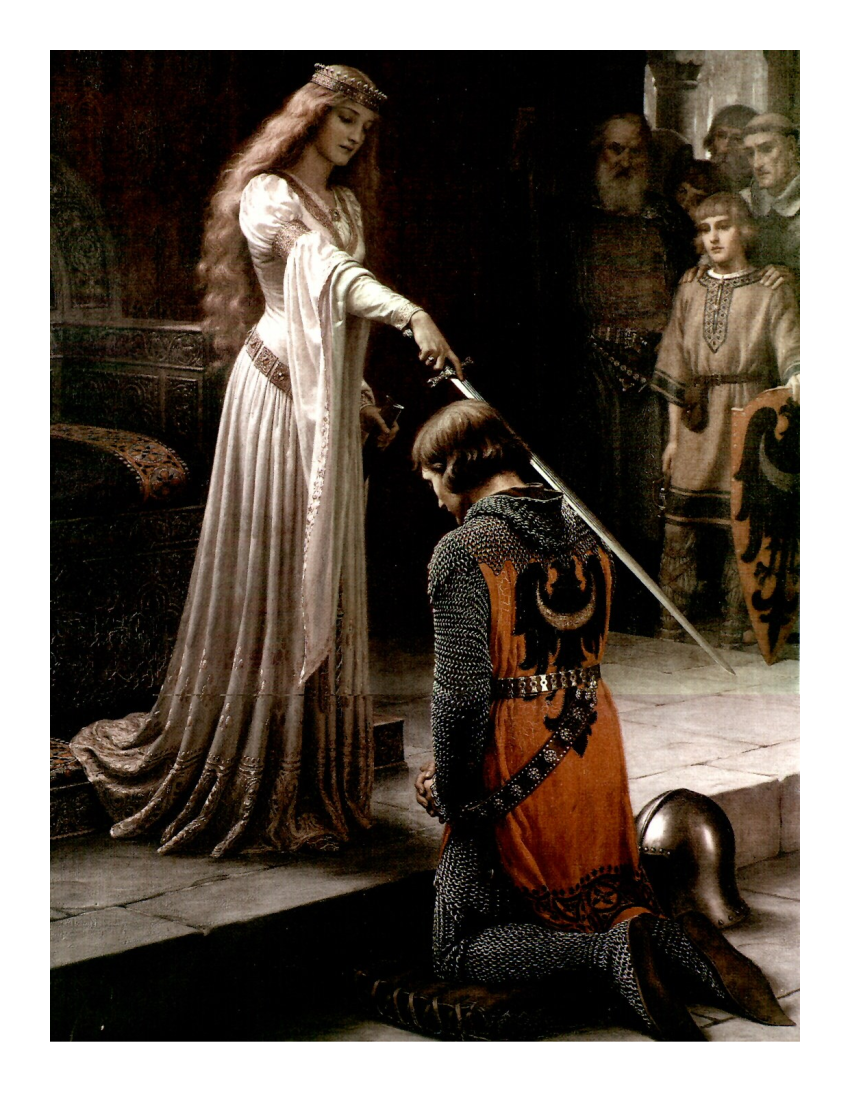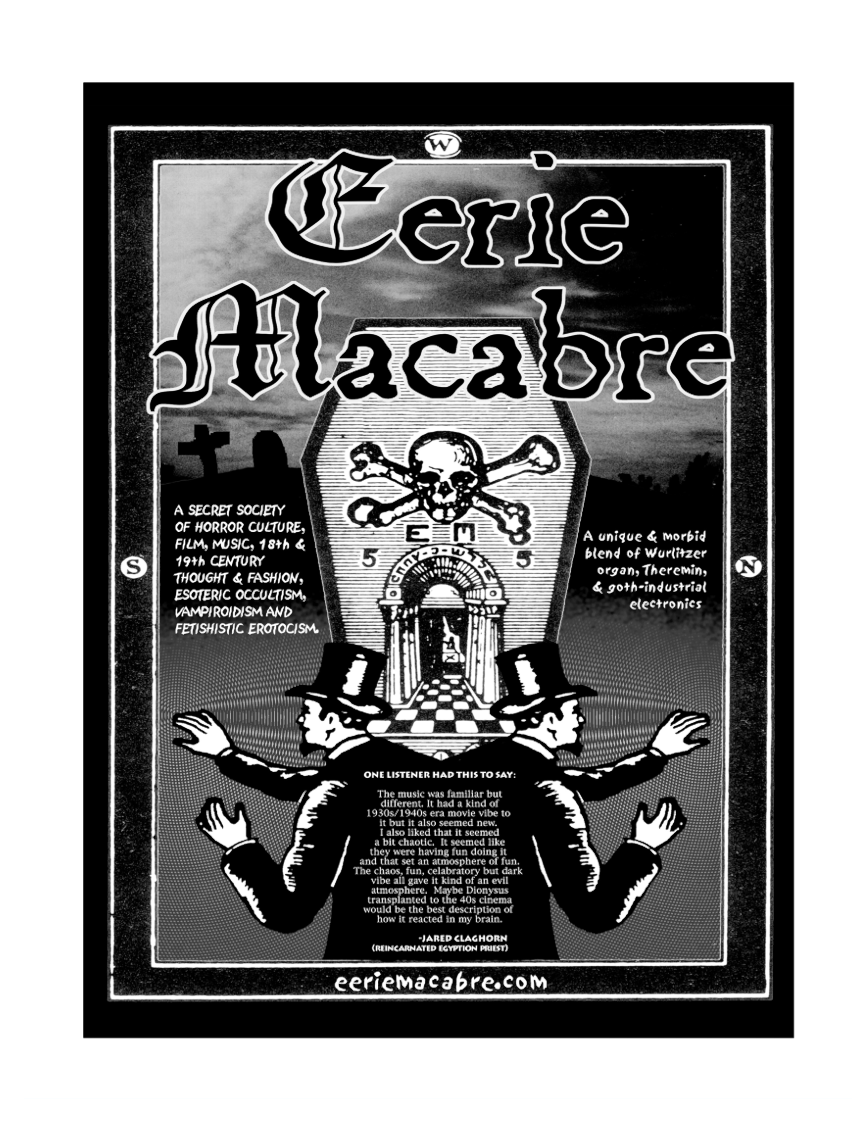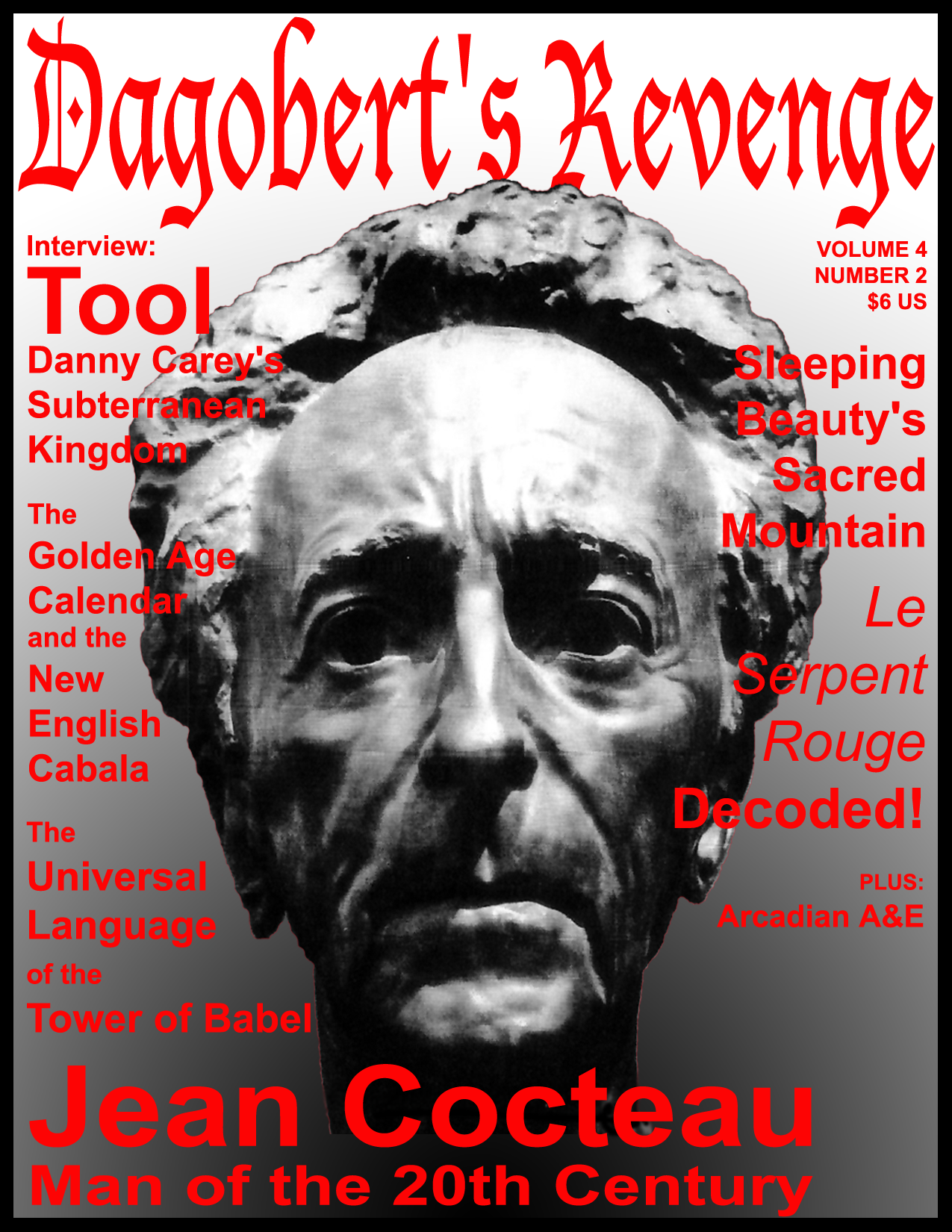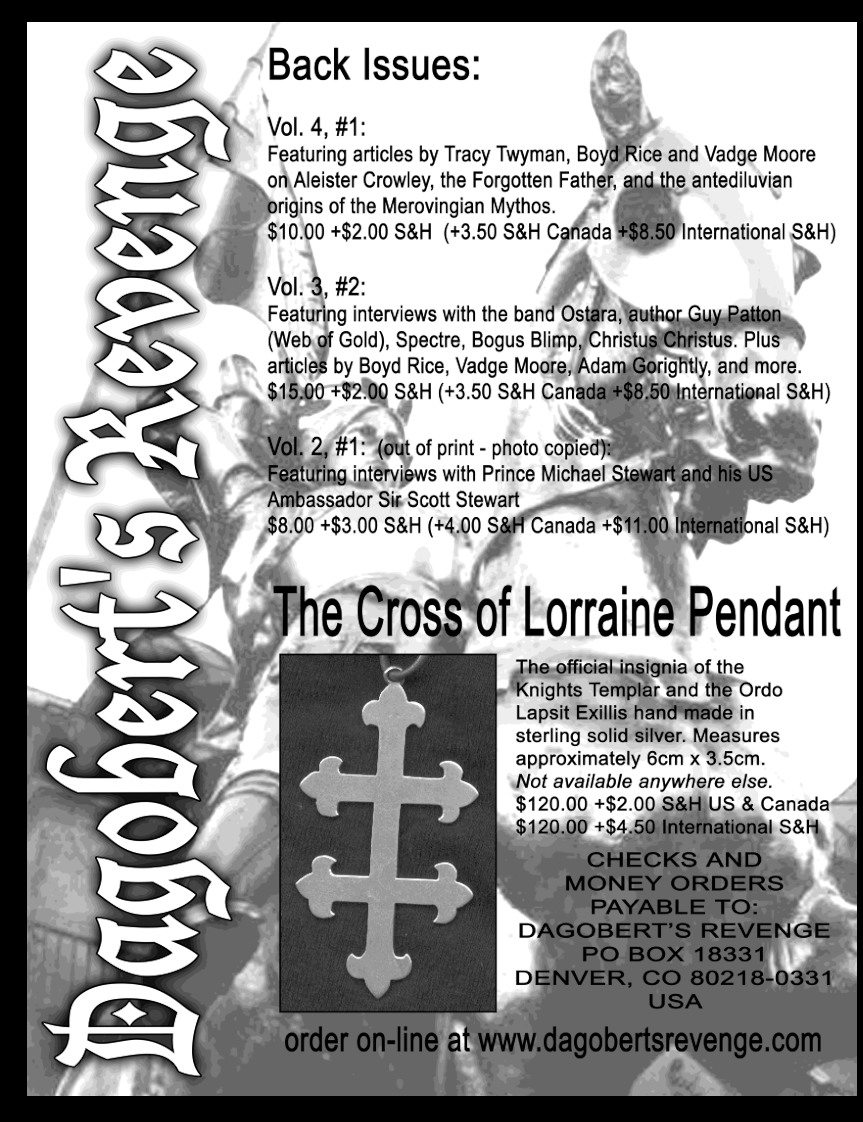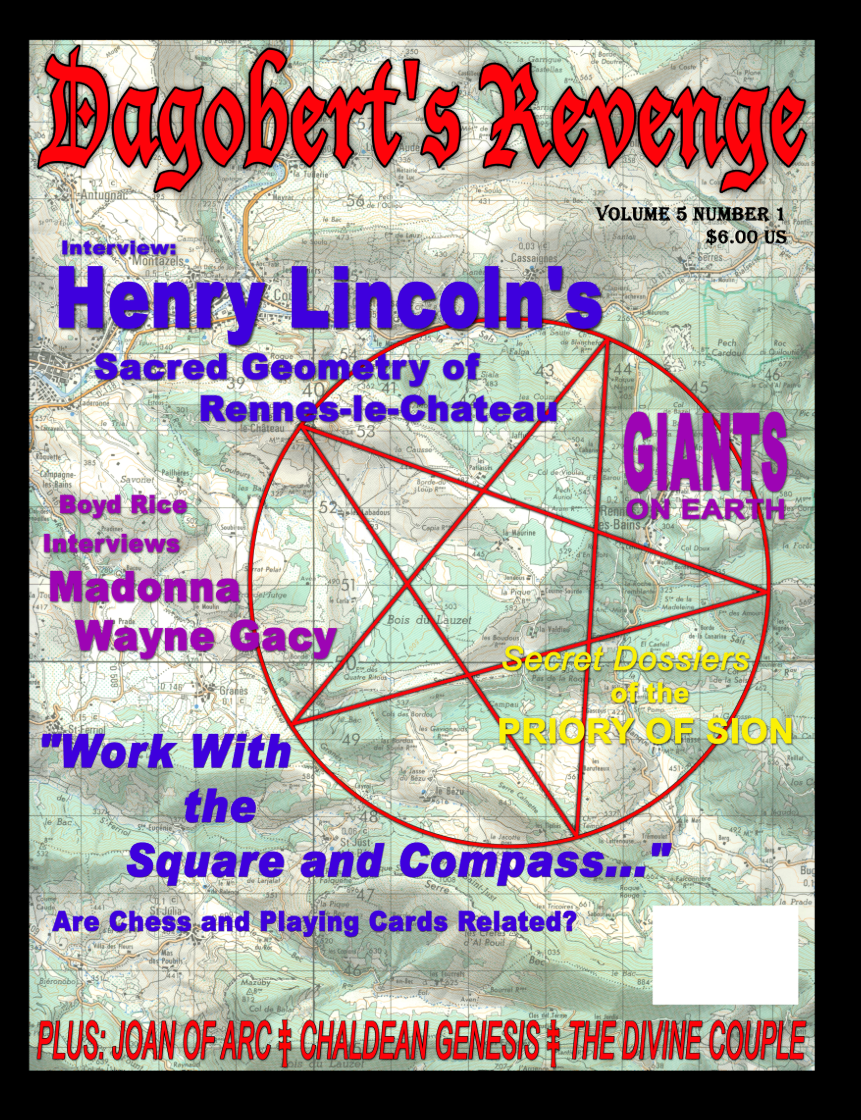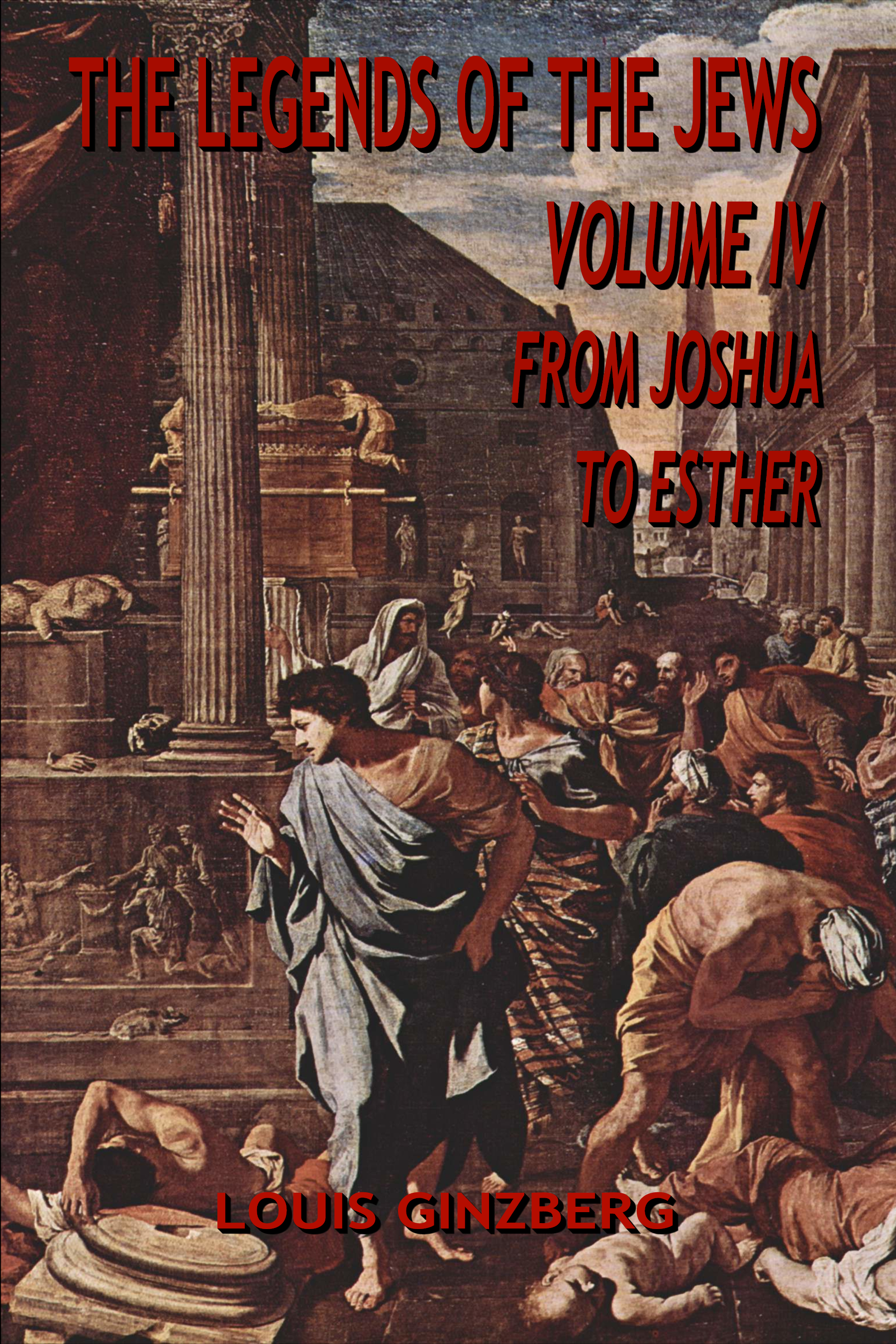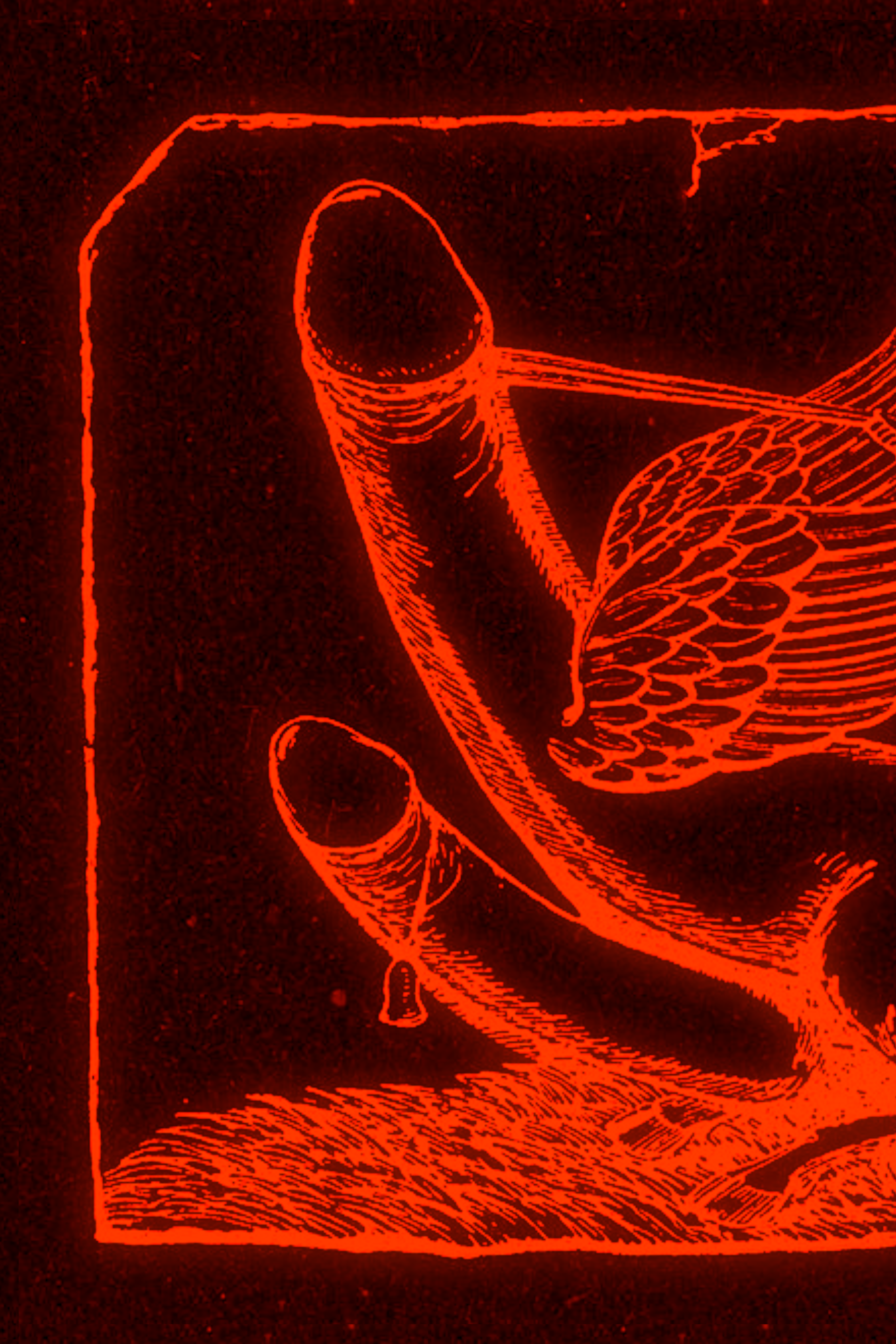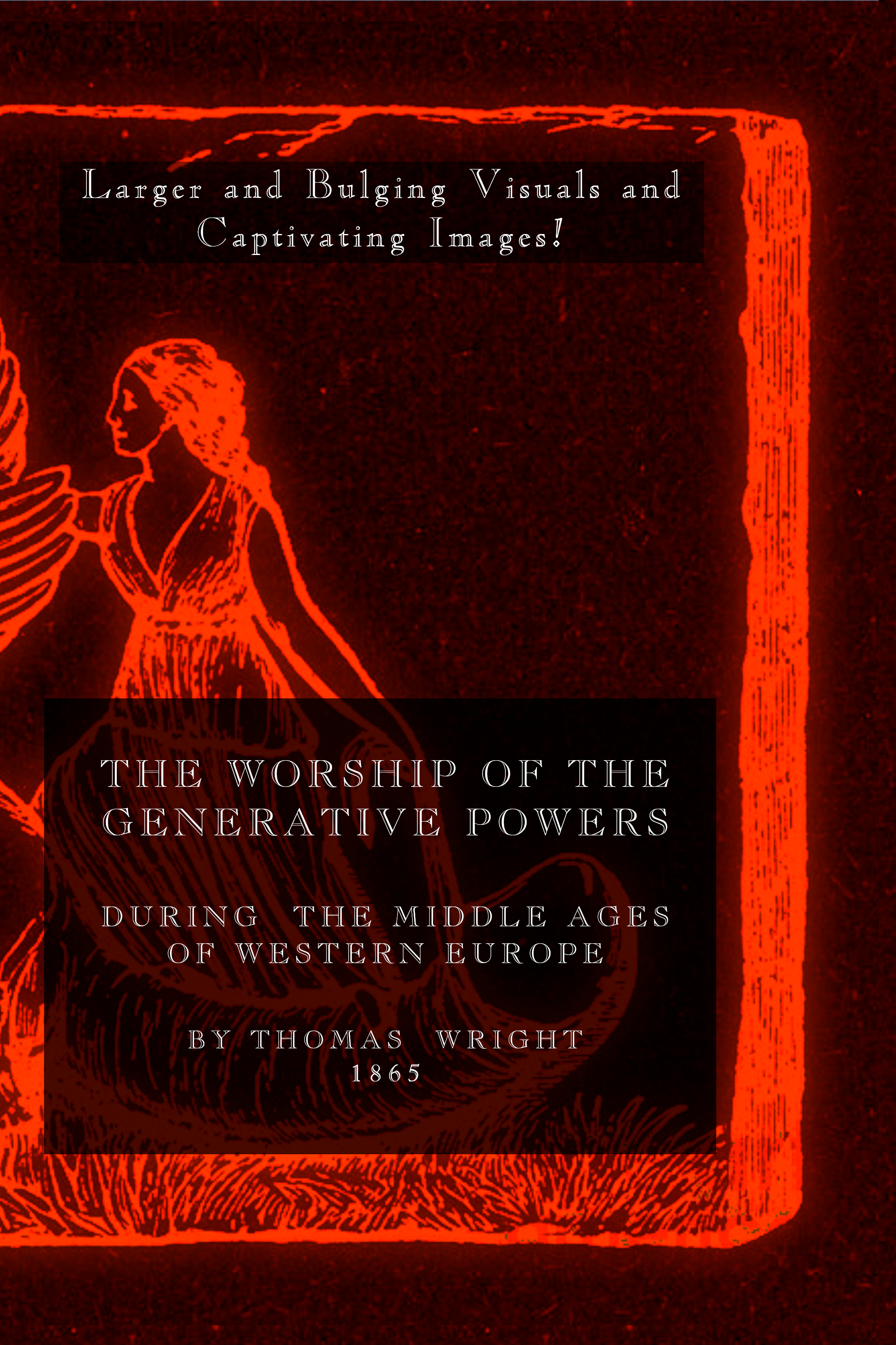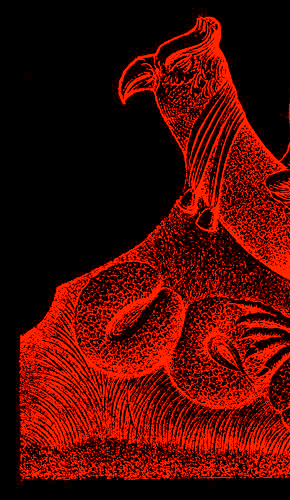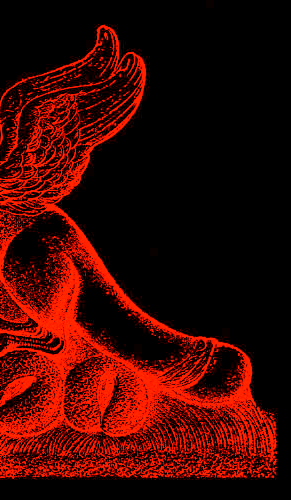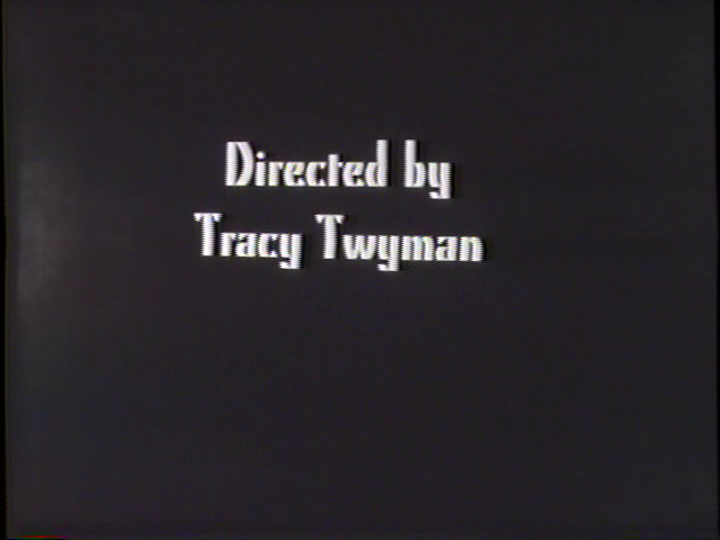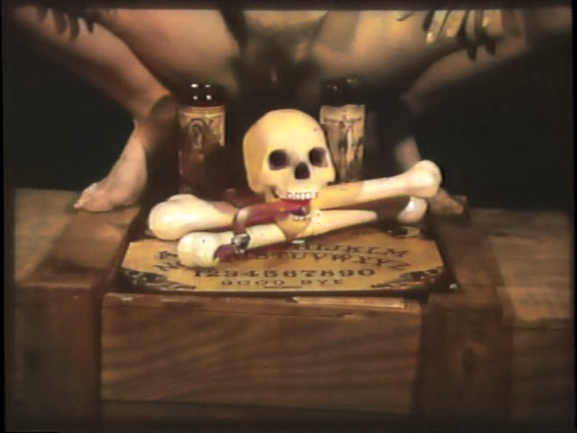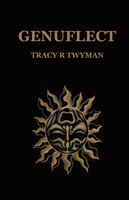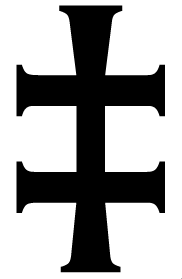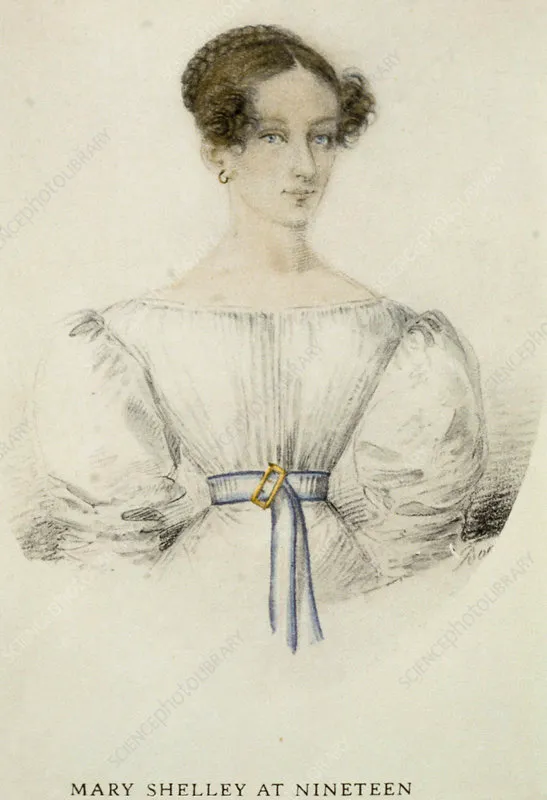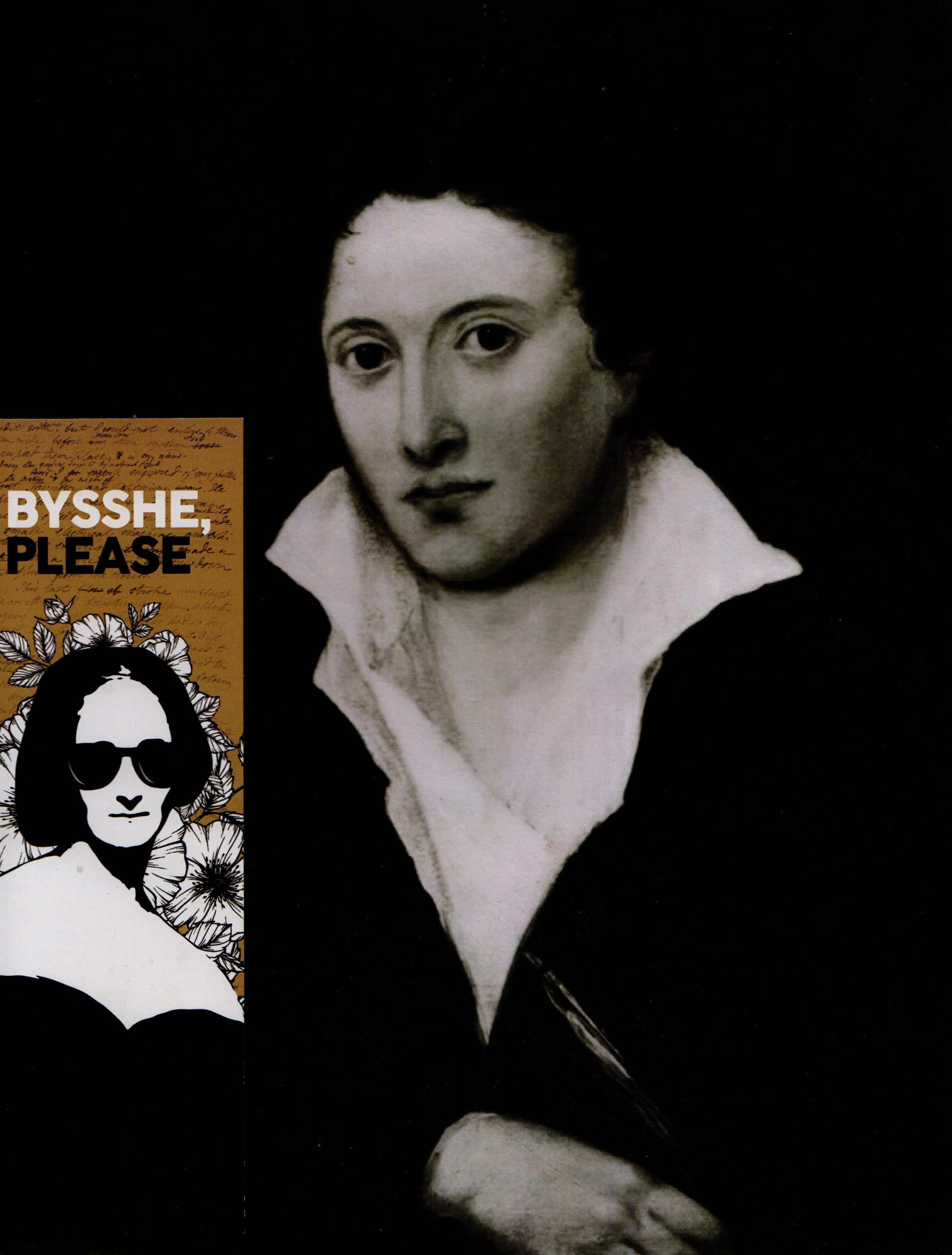يُعَذِّبْهُمُ اللَّهُ بِأَيْدِيكُمْ وَيُخْزِهِمْ وَيَنصُرْكُمْ عَلَيْهِمْ
The Fatherless Bastard, the Son of Trailers Whore Owes Tracy R. Twyman's Husband $1.2 Million
S. B. Alger will pay his dues to Tracy R. Twyman's Husband in Submission and Obedience, (and with a smile), in accordance to the Law, and according to the civil courts that sacrificed him
The Bastard swallowed the bait; as well, delivered the message unto the right hand, as he was supposed to
Lack of foresight, the inability to foretell where this is heading to, and who are addressed now and then; misplacing the motives and narrowing them down to match one's own; all of these do contribute to an unseen and undetected confusion even when the decisions that are taken look and seem as a perfect execution and a fit reaction; not seeing the depth of this, the era or two and what overlaps, how far it extends and encompasses; all of these, and many other essential subtleties do have a great benefit and offer a greate advantage: the effect is the cause, nor what one comprehend and see is real -- nothing is real, all is possible, all is allowed
This is not a nation of laws nor rights nor integrity, as shamelessly promoted endlessly and universally; everyone is seeing this by now, head down to toe
The amount and quality of Hate one does experience from the 'community', from every walk of life -- at every interaction, the betrayal, could only attest that tyrannies are having it easy, and shall reign for another thousand years -yet, they won't
What is done to the other, is done to oneself, and to everyone
★
“no justice, no peace”
★
The bastard, the filth, the rotten fruit of whoredom, Sean Bryan Alger allowed others to utilize him and his girlfriend as dispensable tools, as chess-game pawns for an agenda that is much beyond his role and capability of his intelligence
The bastard allowed it, spread himself wide open for it to get where it needs to get to and in and locked in, clenching to this injected seed, nurturing it within, fermenting the seed of his master intimately deep inside of him, with a sense of an a dedication, accomplishment and delight, while the cost of its growth is hijacking the bastard's life and future; and like a disease of the mind and the body, to spread further and infect others of the same type and of the same hatred
For he will lower himself to any filth just to be given attention, like a typical and severe attention whore
Boise's Bastard, the Psychopath, had involved many others with his fraud and illegal activities, in hopes, in dearest hopes that the guillotine won't fall on him solely, and the others would share his lot, and things get lost
A Bastard that behaves like one
Thus the Lord Hath Rejected Bastards Eternally
A bastard shall not enter into the congregation of the LORD; even to his tenth generation shall he not enter into the congregation of the LORD.
Deuteronomy 23:2
Welcome to Hell. For where Elysium lies? Is it not in the full midst of Hades?
From their activities and of what moves them, indeed, they do all find Hell as a wonderful place, too attached to Hell and its pleasurable torments; like gnats, which find the flesh of the unburied dead as sweetmeat, a feast not to miss, a symposium of the morbid and of the which of the decaying; thus they continue their tract in disarray, serving the other, obedient to their masters as servants, and paying a price for it
"Envy and calumny and hate and pain,
And that unrest which men miscall delight,"
★
"For I confound hell in Elysium"
From Marlowe's
The Tragical History of Doctor Faustus
★
One does not expect from a Religious Fanatic, an uneducated trash, a despised filth, to have a soul which can imagine truths, or to create truths or a God:
"Where deep thoughts are a duty,
Where Love’s a grown-up God,"
Observe

LOL
LOL
An Anecdote: This Ignorant Bastard would require, for sure, more than nine lives, 'reincarnations', much more than that to begin to scratch the surface, that if he were ever granted such
This ordeal had already fucked with his 'karma'
tremendously, beyond what he can fathom, how fucked is he
Enjoy
Since when having a "library" is an indicator of having Knowledge?
If not that, then an indicator of being cultured and being natural with the elequence of etiquette, that is, behavior, and morality, and the swift ability to define what is before oneself?
Once again 'Either one Knows, or Knows not'
Nothing can be known neither, period
...this, and one must reiterate to the self the meaning, the spirit of, the mockery in these lines:
"Und sehe, daß wir nichts wissen können!
Das will mir schier das Herz verbrennen."
To Advise or Not to Advise God LOL
LOL
LOL
If the Bigot Bastard who was conceived through whoredom, truly believed in a
so called "God", or God©, or God®, or God™, or God vs God, or po⅁, or boӘ, or God, or God,
--Prithee.. surely not 'le Gode Supérieur'-- then he,
the bastard, should ask God why He,
that is God, fucks up by creating other people that are different from him, that is,
they look different, or that why he,
which is the bastard, is different from the others which He,
ie God, hath created,
and horribly?
We are all aware, or made aware of, that the
Bastard is buddies with God, thus, the bastard is previliged to question and inquire with God about God
--The bastard might as well, in an
intimate moment, a very intimate moment within a very private 'session', ask God why was he,
that is the bastard, born and birthed out of a whore, and a
trailers park whore----Since the bastard has an addiction problem with social-media platforms, always chattering onboard, sharing many information with the public, and
whoring himself for attention from everyone, the moment the bastard 'hears' God,
that is God, answering him back,
that is the bastard, in regard his inquiries, everyone will know then why was the bastard born of a whore, and a
trailers park whore--The idiot Bastard then should advise God and instruct Him,
that is God, to take permission from him,
the Bastard, when He,
which is God, creates something else or new
thus not to create something that the bastard, even though he sans taste, finds not suitable to his likening
The Bastard should be questioning God for His fuck-ups and bad taste in His craft and art of Creation
Perhaps the Bastard can teach 'God' how to create better things and not to fuck up againWhen the Bastard starts feeding and housing himself by himself, being independent, obtaining a "full-time" job, instead of leeching on a hard working Widow and her children, and stealing from Tracy R. Twyman's Estate, and stealing from the dead Tracy R. Twyman, then the Bastard might have a right, within himself, to speak some nonsense and rubbish pretending to be of some worthy mindThe Bastard is not a man; he picks on vulnerable women and immobile disabled individuals, like the coward he isThe
resentful bastard lacks the sense of humanity, ie,
being inhumane. The abuse and the malice that the
trailers bastard had directed against the
dead Tracy R. Twyman, and Tracy R. Twyman's widower are of a low mind which
knows no God nor humanity, knows nothing from nothing★"Judge not, that ye be not judged"★S.B. Alger is an illegitimate since birth. The Bastard is illegitimate at everything. The day Tracy R. Twyman departed from this world, the
thief, and without hesitation, stole Tracy's Fans Mailing List, her address book, and emailed Tracy's Fans
pretending to be in charge of Tracy's Estate in hopes to hijack anything that is Tracy Twyman
There was no permission requested from the bastard nor any were granted for the bastard to utilize
Tracy Twyman's business address bookThe
Bastard was on a mission to Cancel and Eliminate everything of Tracy Twyman and what she devoted her life to; emailing Tracy's fans on regular basis, with
illegitimate statements and detailing other future plans in regard Tracy's work as if he were the legal heir to Tracy Twyman and being her husband
This requires, as he sees it,
canceling Tracy R. Twyman's husband thus to continue to make believe in his sick mind that he is Tracy Twyman's husband and heir
A mentally ill bastard
The son of a whore emailed all Tracy Twyman's fans and declared his plans to
republish Tracy R. Twyman work on his own, just like this, like he owns Tracy's writings; This and soliciting 'help' from Tracy's Fans to accomplish such a task,
jeopardizing others by inviting them to join and contribute to his illegal endeavor
In a span of two years after Tracy R. Twyman's death, the
sick Bastard Sean Bryan Alger hashtagged
#TracyTwyman at Twitter 6 Thousand timesThe mentally ill Bastard pretends to be an authority in regard to Tracy R. Twyman's image and work, while utilizing the deceased author's name to spread hateful, antisemitism themed agendas and propagate misinformation against Jews in relation to Tracy Twyman's death. This all comes from his girlfriend's house, who is aware of his illegal activities (as she was also sued), who is also an employee of the US federal governmentAll of this, to bring attention to his replusive face, as if the world owes him some deserved attentionSome of the subjects he hash-tagged were of
Religious Fanaticism themes and other rubbish of the same while pretending to be some sort of a theologian
The bastard is a
religious fanatic who is obsessing on whom is considered a '
satanist author'. He tries to 'spread the Word' of the 'Devil' to low evolved souls as his,
as he is posessed by low mind demonsThe bastard cannot handle the slightest exposure to the "occult", thus religions were set and did command 'not to get involved' in no business of their lot
Observe how the
bastard further propogates more of his nonsense as he gets
fucked by the courts. The demons that do posses him do want the
more of the failure that Sean Bryan does expreince; more of that,
which have caused a harsh misery to betake him, as well being indebted 'forever' to Tracy R. Twyman's Husband, and more, losing his already shallow path in life
All of this, the attempt to destroy 23 years of Tracy's work and achievements, were for a pettiness of obtaining 'a thousand members' on one of his social media accounts. Also, compulsively to satisfy his Religious Fanaticism and promote the same utilizing the occult author name, Tracy R. Twyman
.. and being an Attention Whore
He got Fucked for doing so
.. as well, having addiction problems. serious addiction problem
This, addiction problem, had cost the bastard his wife and two daughters, losing them and never allowed to contact his daughters ..rather, a pair of Buttocks of Butter
..rather, a pair of Buttocks of Butter
A psychopath indeed. He thought that dead
Tracy Twyman is like the husbandless
Alicia Anna Taylor, the Bastard's girlfriend, Ryan's widow; just tread all over her and live and waste time at her expense and at the expense of her life efforts and what should had been for her family and
only for her family
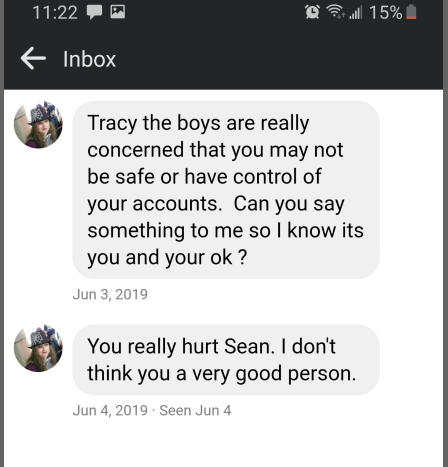 Robotic Alyssia Anna Taylor controlled by the bastard
Robotic Alyssia Anna Taylor controlled by the bastard
Obviously she lost her sense of herself
Abused by S.B. Alger, as her sense of 'dignity' as a woman and a mother was obliterated by the bastard
When Tracy Twyman's Estate protested the Bastard's malice and nefarious activities against what
rightfully belongs to the Estate, and what was done against his late wife, the
son of Cheap Trailers Whore and fuck went on a frenzy spreading misinformation against Tracy R. Twyman's Husband and Widower, initiating a massive organized front for acts of Piracy and
GangstalkingThe low life Fatherless Bastard whom
almost was aborted for being a
despised outcome of early age unbridled whoredom, attempts to appeal to like-minded idiots, that is,
other religious fanatics racists heavily inbred fucks, by pretending to be a victim who is persecuted due to his beliefs and religion by the heathen, Tracy's husband

As well, the
Fatherless Bastard was instigating
Skinheads and
Neo-Nazi associates to send extremely vile, hateful and racist personal messages and threats to Tracy R. Twyman's Widower where S.B. Alger did give them Tracy's Husband contact information to do so:
These actions are what to be classified as 'Hate Crimes'Due to his motives for his malice, which is Hate, the bastard --as he lacks any sense of manhood, nor fathoms what is it to be a man since he is fatherless-- goes around multiple social media platforms spreading dark rumors against Tracy R. Twyman's husband, preparing other hateful individuals within the same group to 'hate' on Tracy R. Twyman's widower: Tracy's husband now and then receives hateful messages due to S.B. Alger, the bastard, efforts at malice
This comes from Alicia Anna Taylor household, who is on the Pentagon's payroll, the initiation of activities targeting a member of multiple minority groups with Hate crimes
This continues until this dayThe Bastard S.B. Alger hates Semites. The bastard hates both Jews and hates Arabs as he broadcast his hatred in public, this is because Sean Bryan Alger, a Bastard, hates God
The Bastard is a God Hater. For the bastard is a Satanist Antisemite, a Necrophiliac Antisemite who harbors ill will against The God of the Semites, the God of Abraham, and the children of Abraham
One of the many reasons for the bastard to Hate God is that God spoke no English. For God had only proven his eloquence within the Semitic languages and letters, but not English, nor American English
The God Hater S.B. Alger thinks of God of the Semites as being a Foreigner, a Foreign Entity, a Semetic Mesopotamian and Iraqi God, from Ur, sourthern Iraq, which doubles the bastard's Hatred towards God
This will be a matter for the FBI to investigate, a case to be brought against many actors who are until this day continuing their thievery and their campaign of disinformation,
to promote antisemitismOf course, this is mixed with other offensive matters as such the absolute trash talk of the
Religious Fanatic's religious themes; rubbish and other nonsense of the imbecile and those who do
lack intelligence at every level; and
relating such nonsense to Tracy Twyman who is at core and throughout her life, an
antithesis to this repulsive and base nonsense of the lunatic
This, is to further his Master's agenda in regard '
Satanism and the Elites and the Jews', as such task was handed down to both:
a Classic expression of AntisemitismLike a surrogate mother who is impregnated by a foreign seed and blood, foreign to her will, the bastard is impregnated with concepts that he is nurturing out of his own, which are as foreign as they can be to his self and life style: very of a typical religious fanatic, the brainless, the born brainless
To be sued $1.2 million, for one to be sued at this capacity, he must be involved in something nasty, very nasty; at least from a metaphysical perspective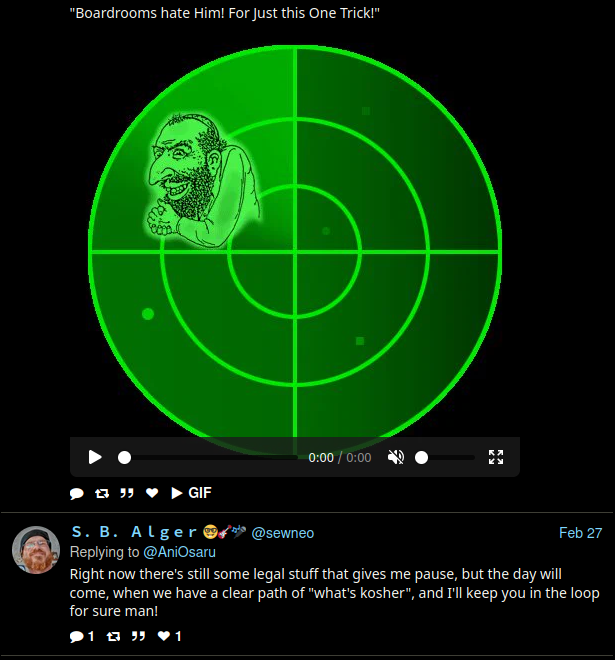 ..and his threats put in perspective. Considering with it his association with Neo Nazis and Skinhead members
..and his threats put in perspective. Considering with it his association with Neo Nazis and Skinhead members![REDDIT, Sean Bryan Alger: "[-] sewneo 2 points 3 years ago I just make sure they know I'm really crazy and dangerous too..."](./images/text/reddit/reddit-sewneo-threat-i-just-make-sure-they-know-am-crazy-and-dangerous-too-narrow.png)
It is unacceptable to utilize Tracy Twyman's image for any agenda; specifically a hateful, of an impotent agenda to advocate Hate and
Antisemitism
All of these illegal activities, including Antisemitism, promoted by S.B. Alger the Bastard, do originate from the US federal government employee Alicia Anna Taylor's household

The Bastard of Boise was satisfying his Master's agenda for the love of Attention and for being a humiliated total Attention WhoreThe worthless Bastard thought he was becoming a popular figure, progressing to be a public figure in status, a
representative of the posthumous Tracy R. Twyman, as his master encouraged him to further interfere in Tracy Twyman's Estate's business with "sock puppets" who do thank him a million, and admire his 'bravery' for posting much on social media about Tracy Twyman, and for his attacks against Tracy Twyman's husband
The Bastard is fucked in the head, that is, he believed himself to be something of worth. These "sock puppets" were ran by one or two individuals
who sacrificed him as well, that is, was tossed away like an old shoe
The
psychopath Bastard thinks he is something special, God's gift to the human race. That he has some indispensable talent which mankind cannot be complete without. In fact, the bastard thinks that "God" speaks to him, because he is special and different from the others, a miracle bastard,
thus he thinks of himself as being a delegate of God and a theologian of his time One could only hope -and in good Faith and in good Hope- that God had absolutely no interest in sharing his sex toys and kink
One could only hope -and in good Faith and in good Hope- that God had absolutely no interest in sharing his sex toys and kink
 This is how FUCKED in the head is the Bastard'..but.. but.. but.. I saw God eating biscuits!'The head-fucked bastard
This is how FUCKED in the head is the Bastard'..but.. but.. but.. I saw God eating biscuits!'The head-fucked bastard that attached itself to Tracy R. Twyman's name.. astonishing..
what trash one has to deal with at timesHe couldn't get rid of his 'addiction' and cease his senseless activities against Tracy Twyman's widower, even when he realized that he was being viciously fucked legally A Bastard and an idiot, no surprise he managed to get himself in trouble, serious trouble
..and quoting the Scripture here and there, pretending to be a non-whorish docile grazing sheep, an innocent looking and sounding sheep, a sheep that is only minding its own business, grazing obliviously under the Heavens, rather, a victim whom is 'targeted' by Tracy R. Twyman's Estate for nothing
In his empty skull, the Bastard thinks it is
an issue of religion and race, a Crusade.. This is how fucked in the head is he
 Bigot and Racist S.B. Alger of Boise in Arab attire after being FUCKED by Tracy R. Twyman's "crazy Arab husband": Missing his 'Daddy' the Sheikh, and wanting more of the unforgettable Arabian throbs and over fulfilling throbbing, the shaking and spearing.. the Arab's staff throbbing inside the forsaken barren 'wasteland', cultivating ecstasies within the fucked psyche's realm and vortex..DOUBLE FISTED BASTARD
Bigot and Racist S.B. Alger of Boise in Arab attire after being FUCKED by Tracy R. Twyman's "crazy Arab husband": Missing his 'Daddy' the Sheikh, and wanting more of the unforgettable Arabian throbs and over fulfilling throbbing, the shaking and spearing.. the Arab's staff throbbing inside the forsaken barren 'wasteland', cultivating ecstasies within the fucked psyche's realm and vortex..DOUBLE FISTED BASTARD
RACIST BASTARD
Missing his Daddy's Fists
-- In & Out ==
★"Crying won't help you, praying won't do you no good
When the levee breaks, mama, you got to move"★Is the man who is with his ex-wife laughing with S.B. Alger's ex-wife, the mother of his two daughters, at his Major Public Fuck Up & Humiliation?
Are they laughing at a loser who messed up his life at a time when he should had retired with ease (just by leeching on vulnerable women, widows and their victimized families like a cowardly cunt)?
Surely he is, the man who is dominating what was once his household, as well his ex-Wife, the "
crazy bitch", laughing at Sean Bryan Alger, as both are in what was his bed at one time
S. B. Alger is a Failure. He lost his family, lost his wife, lost his two daughters; and now, he lost his money, future money and assets including future inheritance, and lost any of the prospects of marriage to the self-disrespecting
needy girlfriend, the "
Fiancé"
★"The righteous eateth to the satisfying of his soul: but the belly of the wicked shall want."**★

Penguin
"chubby" and "traditional"
Fat and smelly, and a Religious Fanatic perhaps as the bastard tries to portray his girlfriend to justify his obession with Tracy R. Twyman?
**In speculation of this proverb, and to give everything its deserved measure, and in consideration of the understanding of human nature of times before-- this line is addressed to 'man'. For a woman creates life into the corporal which necessitates a 'belly' that would 'want'. What triggers such 'want' within or wihtout the occasion thus would be originating from such cravings rather than the described 'gluttony'
Are these the main reasons for Alicia Anna Taylor which compells her to allow her boyfriend to drool on another man's dead wife publicly even when it is pointed out to the Bastard in public such is an unacceptable behavior?
Gluttony?
Does Alicia suffer from the consequences of the Sin of Gluttony?
The 'Camp' never worked out for her? Still suffering from the effects of Gluttony, physical and psychological?
Lack of self confidence?
She's OK with the Bastard's obsession with another man's wife? to a degree of ruining one's own life?
She has no 'say' in this?
Alicia pays the mortage, not S.B. Alger, she must have a say in this, she must
The usual of the ill-begotten Bastard, it is someone else to blame for the situation he is in
Since S. B. Alger is a Fatherless Bastard, no male figure initiated him into one of the fundamental passages unto Manhood, and being a Man: Taking responsibility of one's own Action and Decision; taking Ownership of oneself
Who is to blame this time? God? The chattering spirit issuing commands audible only to him? Nurse Alicia Anna Taylor, his girlfriend? ..to blame for this major burden that fell on him?
Indeed, the cheap trailers fuck will blame Alicia this time: For she had not paid nor 'lent' S.B. Alger the money to pay for a lawyer on the first round..
Alicia stood up for herself, for once
Moments of sanity, a phase of clarity, priorities rearranged, which were short lived, Alicia ejected the Bastard out of her house, sending him back to Walla Walla, protecting her self and her family from his creepy fuck ups
Why does not Alicia see that S.B. Alger is deprived from his own two daughters by law for a valid reason? Why would she admit such toxic psycopath back into her house, leeching on her and her family?
How would Ryan feel about it?
Alicia did not pay for a lawyer to clean up after the bastard's own mess and for the results of his obsession with a dead married woman..
What will Alicia tell her sister, family, friends, neighbors, co-workers, church members in regard Sean Bryan Alger? Would she tell them that her "boyfriend" had been sued $1.2 million by a "crazy Arab" because her creepy boyfriend was obsessing over his dead wife publicly and making a scene of it? This.. while disregarding Alicia, humiliating her publicly?
How would she tackle this degradation without having her family looking down on her, that she is allowing her creepy and mentally ill boyfriend tread all over her, and without a sense of shame, provoking the "crazy Arab" by being indecent and repulsive towards his dead wife's memory?
The Irony or the worst of it is this deceased author is an author of 'Statnist' books, or the least, of the "occult". What Alicia thinks of this? Both of them claim to be 'religious' and etc, yet she allows her boyfriend to be invovled in a 'satainist' world and work, and the world of the 'satanist's' husband who they think of as a "niqqa" and a heathen; a brute; indeed a brute and wild
It is already backfiring. They, the bastard and his "chubby" abused (i.e. "traditional") girlfriend, thought that tickling the devil's balls is a matter that can be taken lightly
Balls of Hot Steel which burns those who touch these Red Balls with their finger tips feeling them or hold these Hot Balls with their palm
Did not God advise, and command them not to be involved with Witchcraft nor Witches?
Are they both deaf to God's Commandments?
They Listen not to God?
Why not Repent from this 'occult' business?
In summa, Alicia Lee Taylor had betrayed the Bastard Sean Bryan Alger and let him down, forsaken him and his fate unto the hands of the "crazy Arab" husband:
It is Alicia fault that Sean Bryan Alger has to pay $1.2 Million for this thievery (Thou Shalt not Steal.. rings a bell?).. he is a victim, it is not his fault.. not at all.. a victim.. a 'targeted individual'.. it is the "crazy Arab" who is the bad guy, may be it is his fault.. the Bastard is a good guy and a poor victim...
D A R V O
A Narcissist Psychopath's Trait
It is Alicia's fault, not his
Totally
No Questions askedHis 'finances' are watched by nowLegal documents are exchanged at the moment, pertaining the methods to divide this freshly won 'booty'
Like what was done to Tracy R. Twyman, vultures all around her asleep presence, whilst she was awaiting burial to rest in supposed peace that was never givenLike a
shaved dog, how is he exposed today to the world; an exhibit substance, a deformity, to look at with contempt and mockery and say "
Look! Here is the refute byproduct of Whoredom! a Bastard! How he fails, how he falls!"
Cigarettes? Amaretto? Nylon Hose?
For the son of a whore is as well an 'attention whore' (
whether such is a hereditary trait or an acquired one, this is left to the reader to contemplate.) This, by utilizing Tracy Twyman's fame to get attention to his ugly and repulsive face and looks
He managed to get the wrong Attention at the endLoathed is his sick lot S.B. Alger Failed, and for good, stamped on his repulsive face, ugly and repulsive face
The son of a whore won't recover from thisS.B. Alger did intrude in Tracy R. Twyman's private life. No respect was given to the
dead nor to her grieving widower neither
A disgusting and predictable hypocrite and
Religious Fanatic. What brought him to this then?
The hypocrite preaches about God while being actively deprived and lacking any
knowledge of theology and the spiritual
Such is very the obvious from the Bastard's behavior which resembles nothing but
IgnoranceShould he not think of God instead, and not of the dark side? Should he think not of God instead of
obsessing on Tracy's husband wife, even while being dead? Nor the idiot was cut to tread the path of the infernal;
look where is the idiot at nowA hateful Bastard: may Hate eats further into his so-called soul, and may his Hate damn his days and nights
He goes around like a maniac and vomits all around his disease out, '
Oh people, God sayeth this.. God also shat this there.. Prithee, would you like to find God'? He's stuck inside someone's ass.. wait! I will pull Him out for you.. here.. then I will say 'You found God!'.. I can show you the way, only I can do that.. Hark! The End is Near! Oh Repent to God! Oh, I just heard an angel fart in my ear, and another blasted the first away..!'
..and so forth with this nonsense that you hear now and then in the city's square, where the idiot thinks he is doing himself and the world a favour..
forcing himself and a sorry spectacle of his deficiencies on everyone..
It was once heard said like this at Downtown:
"Ye Sinners! Ye Fuckers! Ye Shitters! Motherfuckers! Repent Motherfuckers! Repent! Repent to the Motherfucker God! Ye shall all go to Hell.. Ye Motherfuckers are Heathens, Sinners!~ All of you shall be punished by Hell to dwell in and bathe naked before all in Lakes of Fire.. and bar-be-qued without an end forever and forever and forever with Zeno of Elea a Heathen! Motherfu.."
Of course, the idiot's case of
chronic hemorrhoid condition got worse after this; it was very bad
Besides his blistering hemorrhoid malady, the idiot had not seen an
unshaved pussy for many and many moons where he forgot when it happened or that it happened
Haters
Yet, while whoring God around high and low, the Narcissist Psychopath acts like a sick person as he is abusing Disabled Individuals, who came to him seeking a service as the bastard was entrusted to perform such a service; and then goes online writes about it like it is an achievement to brag about
Because the other person, the disabled individual and human being, a human with emotions and needs and above all with Dignity like
everyone else was a "Muslim"
This extends, the
Bastard's Hateful malice, towards and against Tracy R. Twyman's Husband and Widower
A degenerate, lowest of the low, base of a person never have been witnessed before, a coward and inhumane filth and trash
His upbringing in
Trailers and being
fatherless, had rendered him oblivious to what is it to respect his own private life and of the others. An upbringing which taught him not the importance of 'self respect', as he lacks any sense of himself
One cannot move like this in life without crossing the wrong person.
And S.B. Alger didTo the many, it is a 'turn on' to see a supreme Idiot fucking up himself
Indeed,
it is a turn on to see the vanquished in the act of being subdued in utter humiliation and succumbing to a lower and a degraded status in life
For "
God is Good", as well is the show..
For how many of an idiot does the reader know, those who do fuck up themselves by owing $1.2 Million for
Nothing?
"Invulnerable nothings"
For nothingOnly Sean Bryan Alger can pull such a fucked up Fuck-up
For S.B. Alger was born to fuck up (and not for the "Occult")




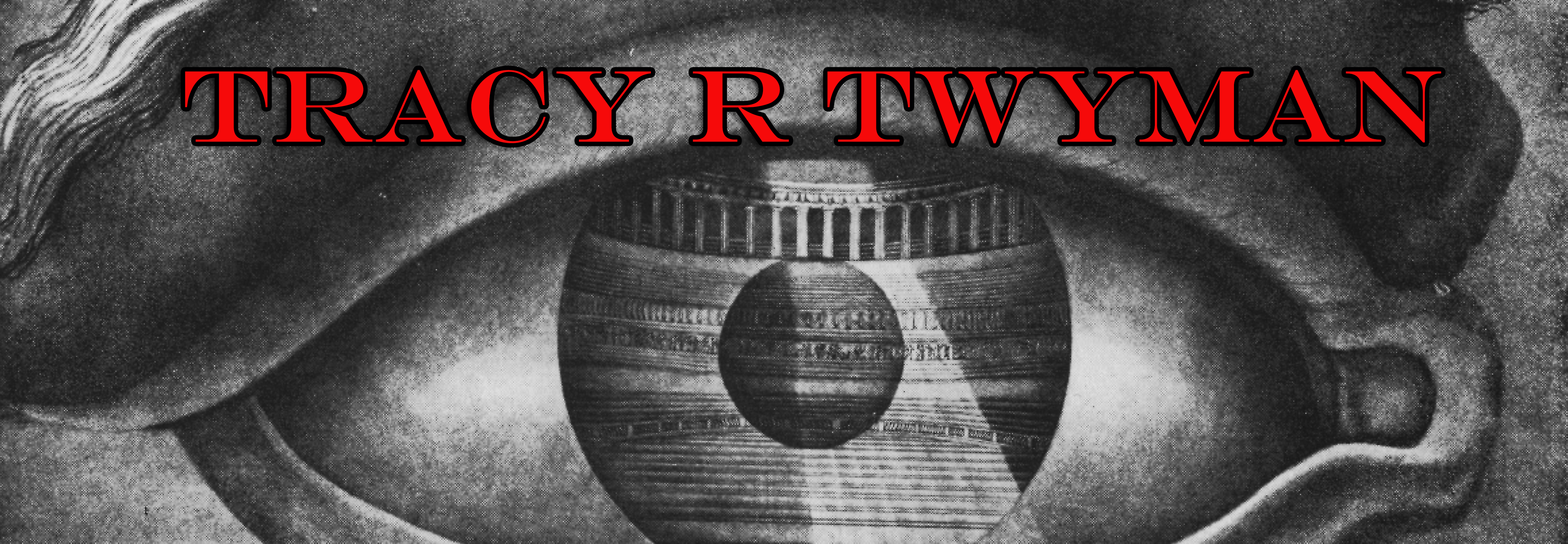








![REDDIT, Sean Bryan Alger: "[-] sewneo 2 points 3 years ago I just make sure they know I'm really crazy and dangerous too..."](./images/text/reddit/reddit-sewneo-threat-i-just-make-sure-they-know-am-crazy-and-dangerous-too-narrow.png)







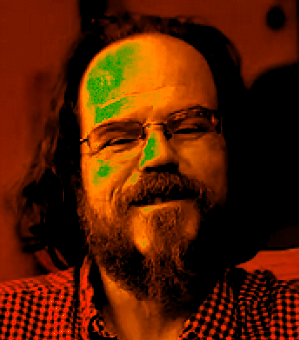


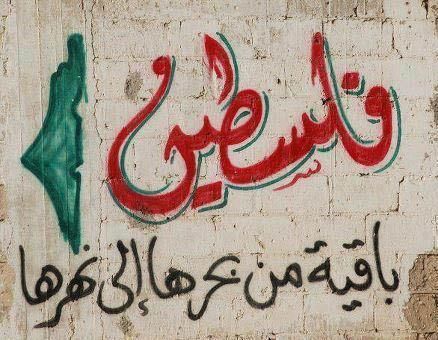




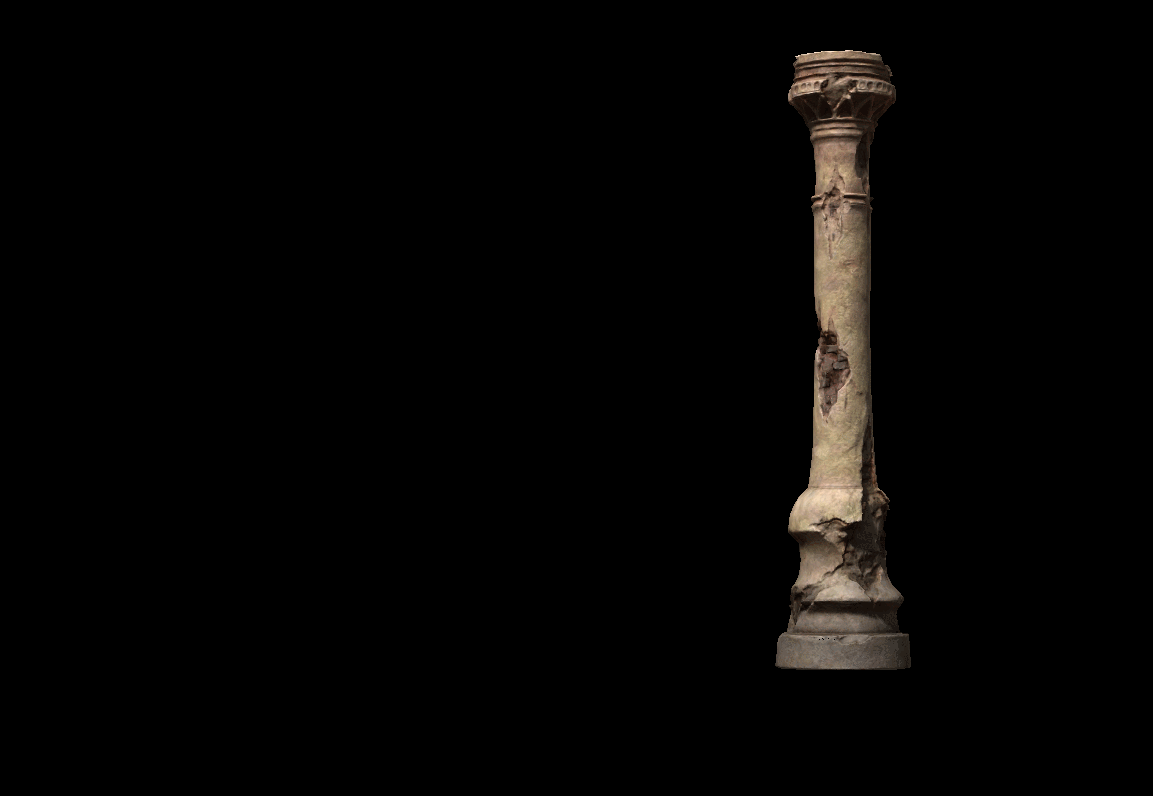
![We dive into esoteric & occult & conspiracy topics--and we have a synchronisticly good time--regardless of who might be our featured guest for the livestream. We always have a big panel of people--IT'S LIKE THE MAGICAL BRADY BUNCH!--So please come check us out--and subscribe--and jump in the Telegram channels for all the updates and exclusive content.] We dive into esoteric & occult & conspiracy topics--and we have a synchronisticly good time--regardless of who might be our featured guest for the livestream. We always have a big panel of people--IT'S LIKE THE MAGICAL BRADY BUNCH!--So please come check us out--and subscribe--and jump in the Telegram channels for all the updates and exclusive content.]](./images/suspicious-individuals/alger-lee-taylor/gif/sb-alger-psychopath-trans-green.gif)



